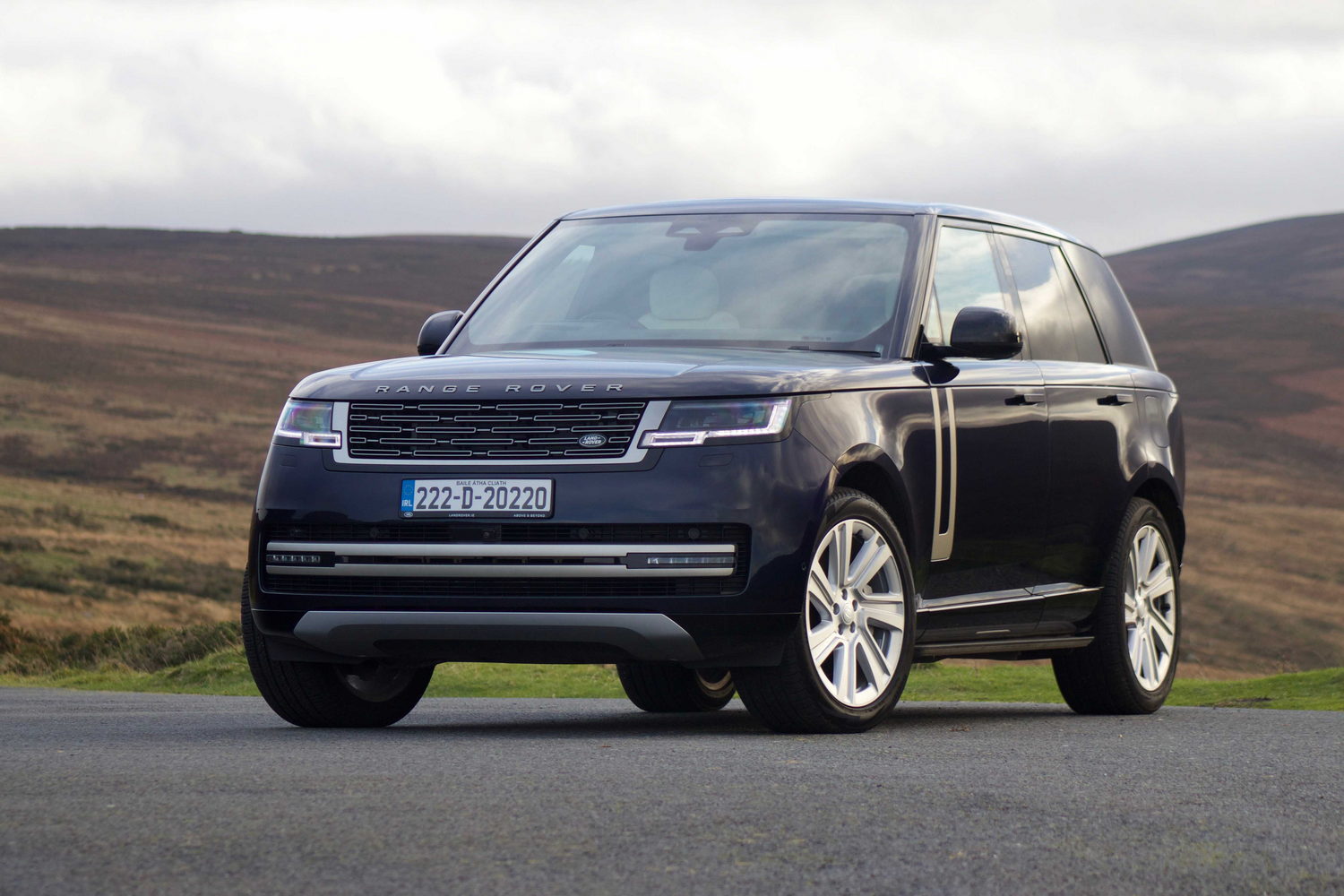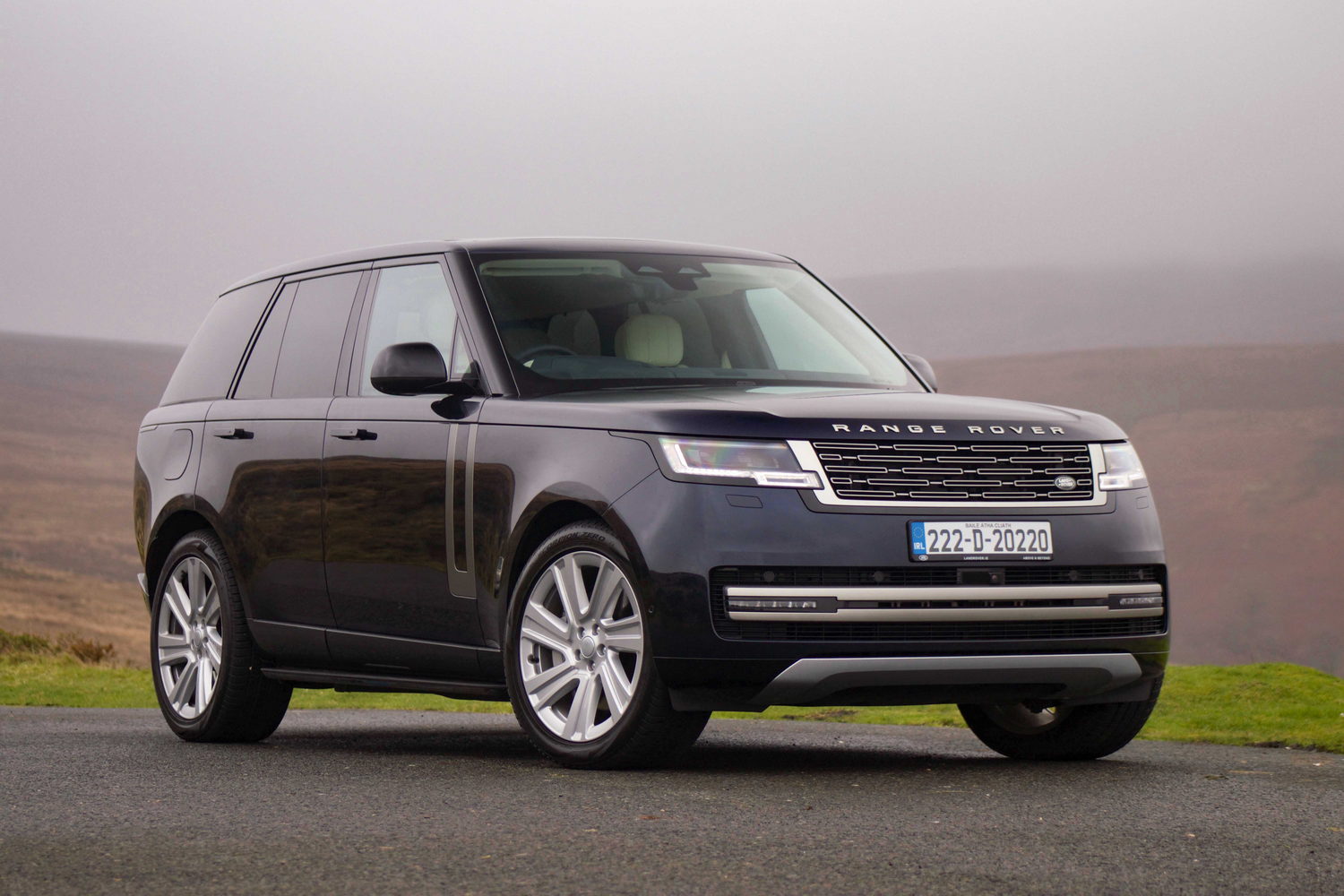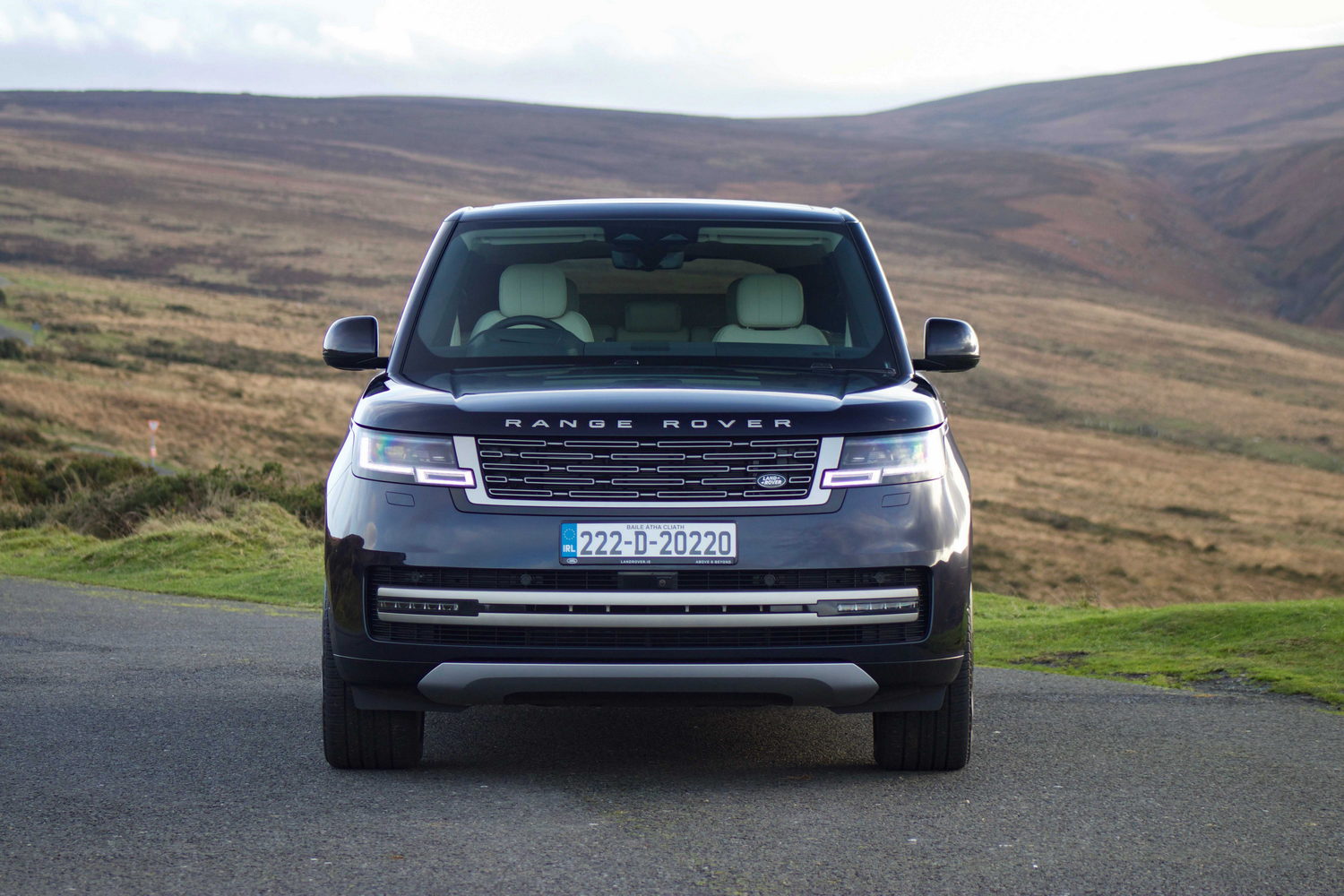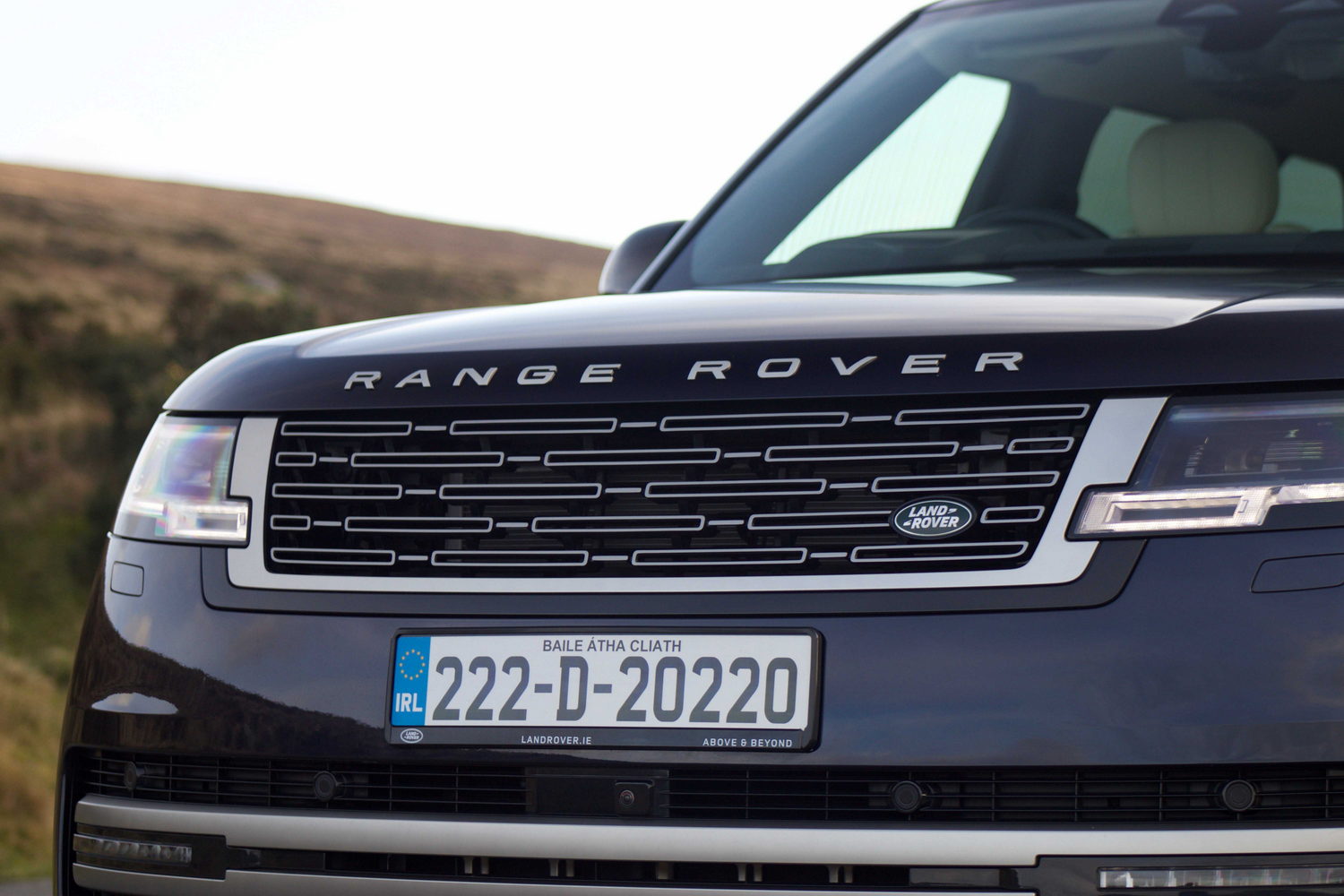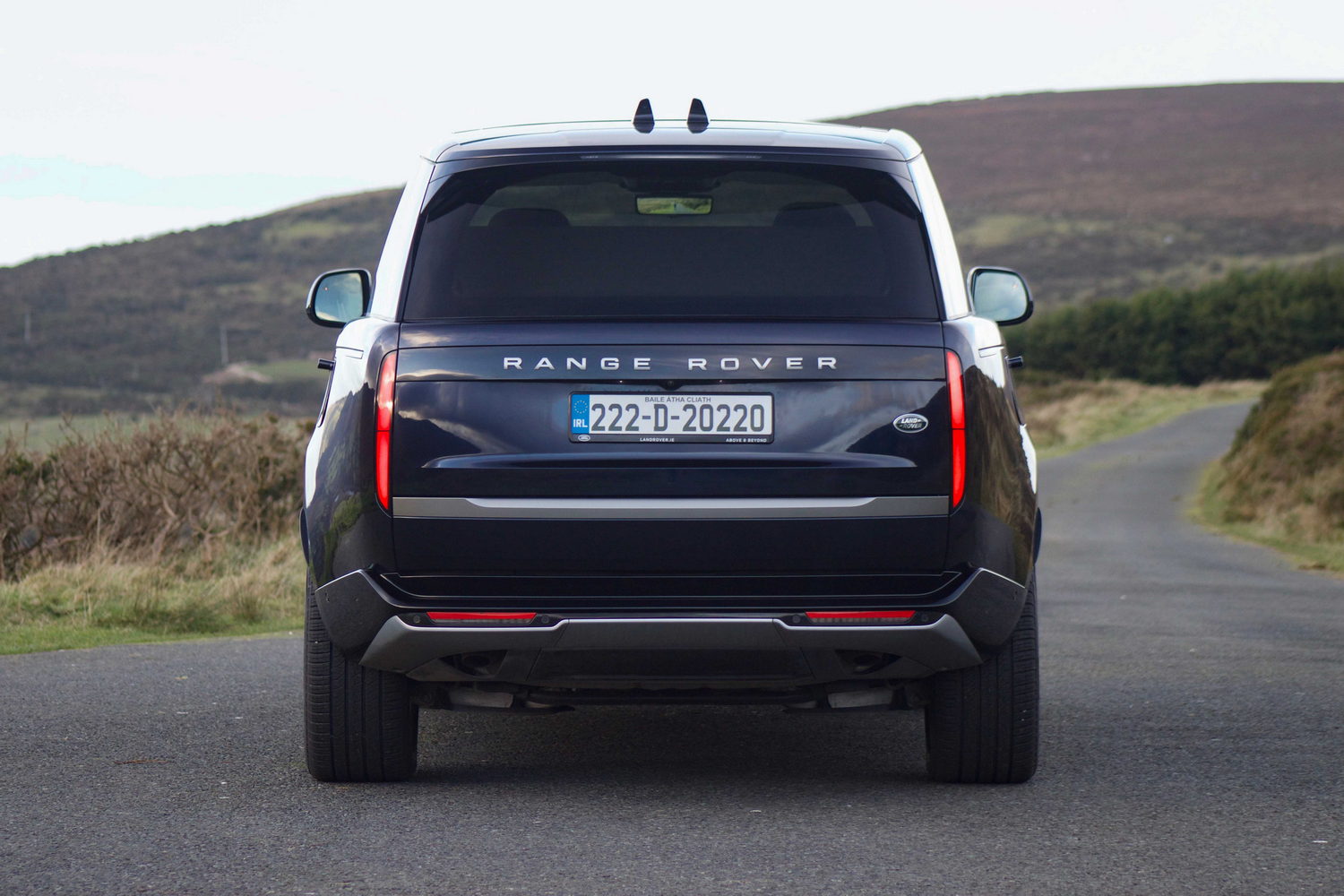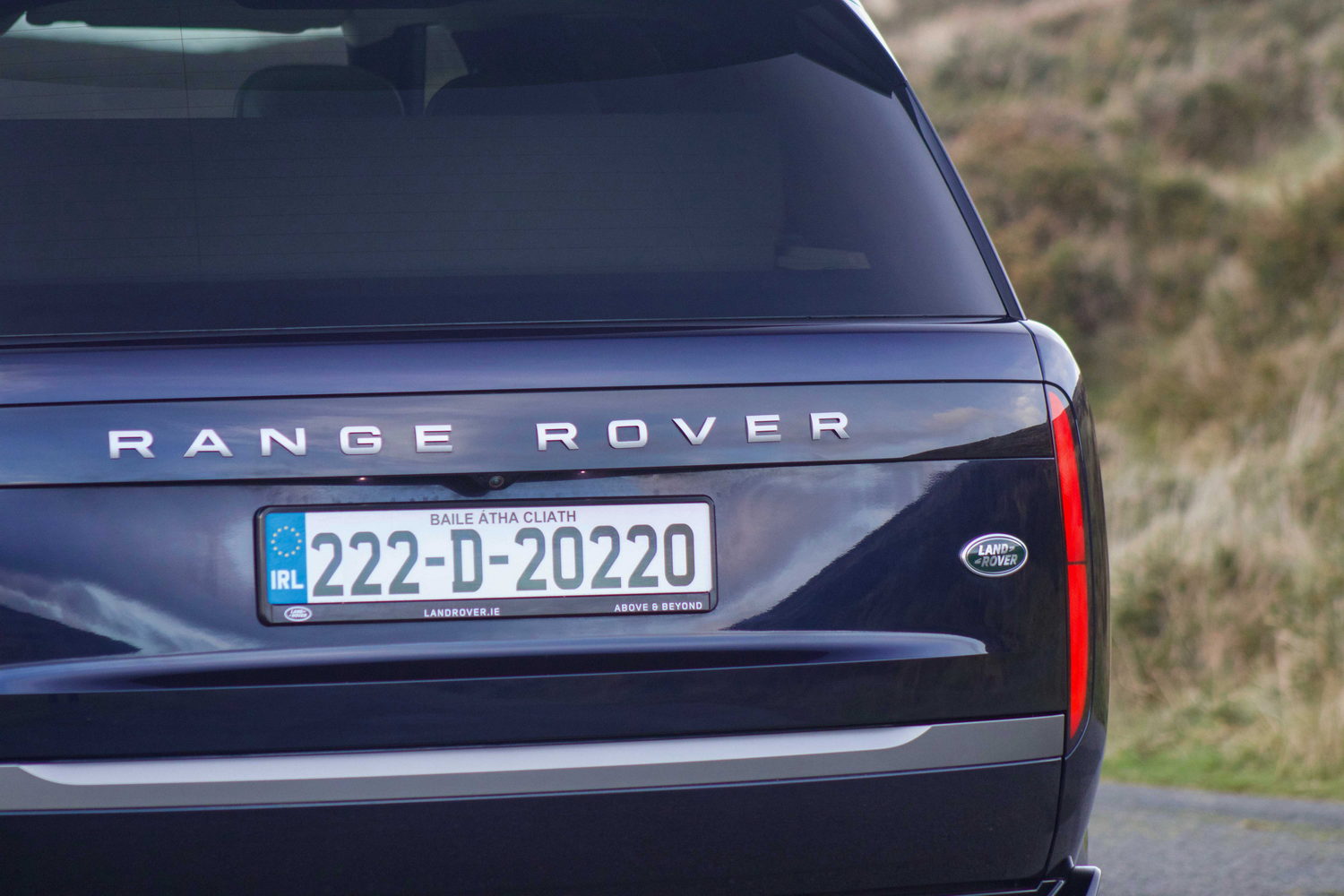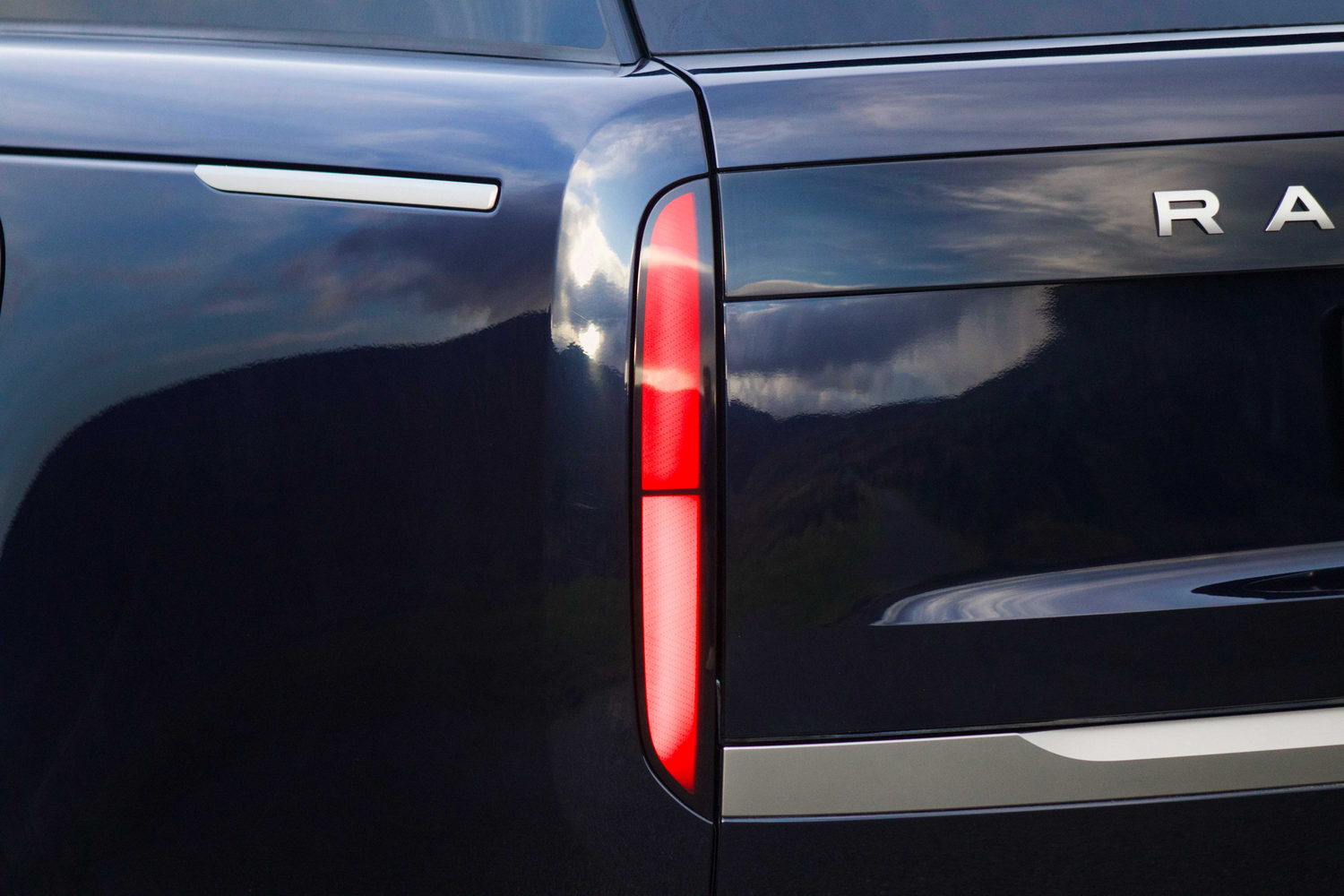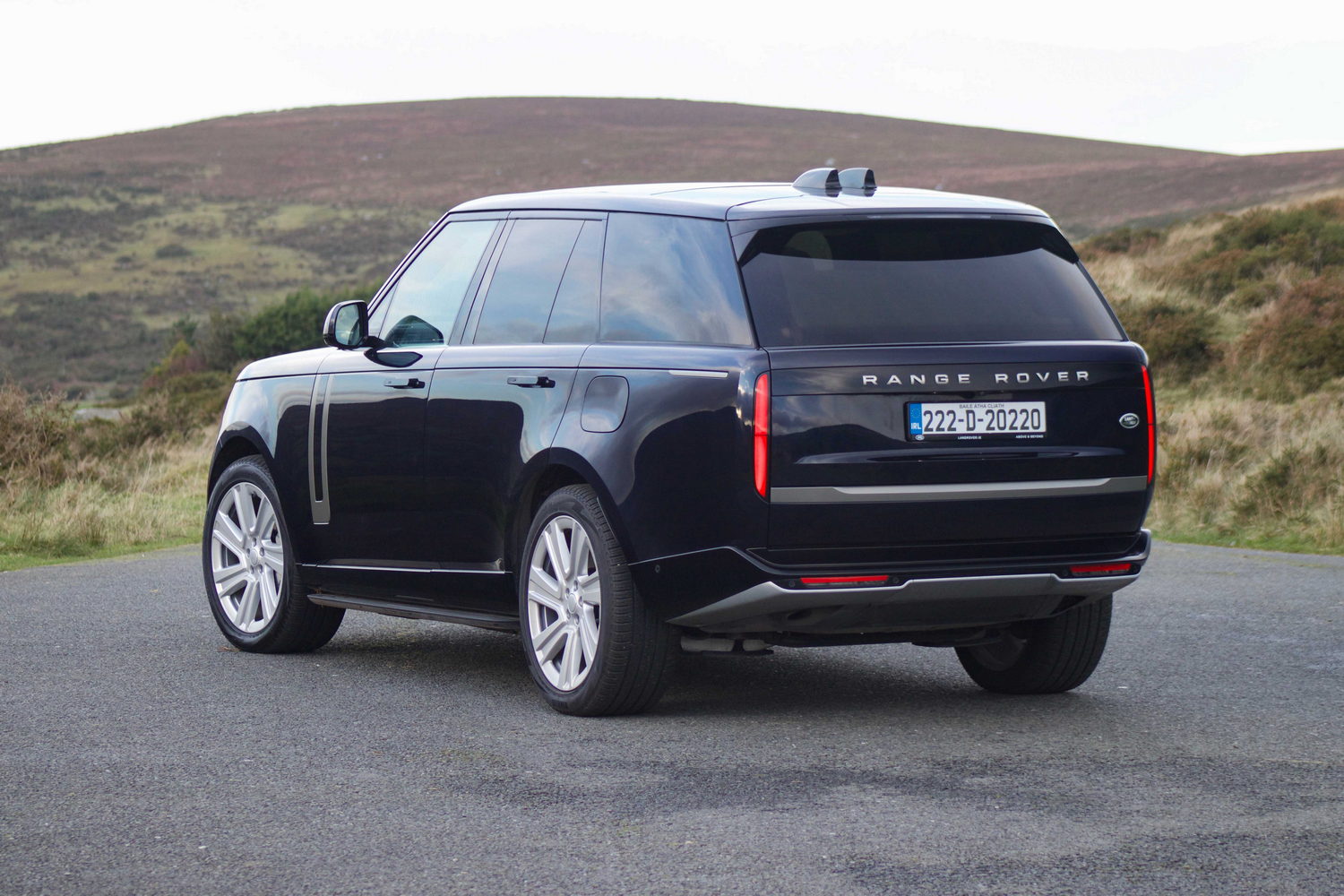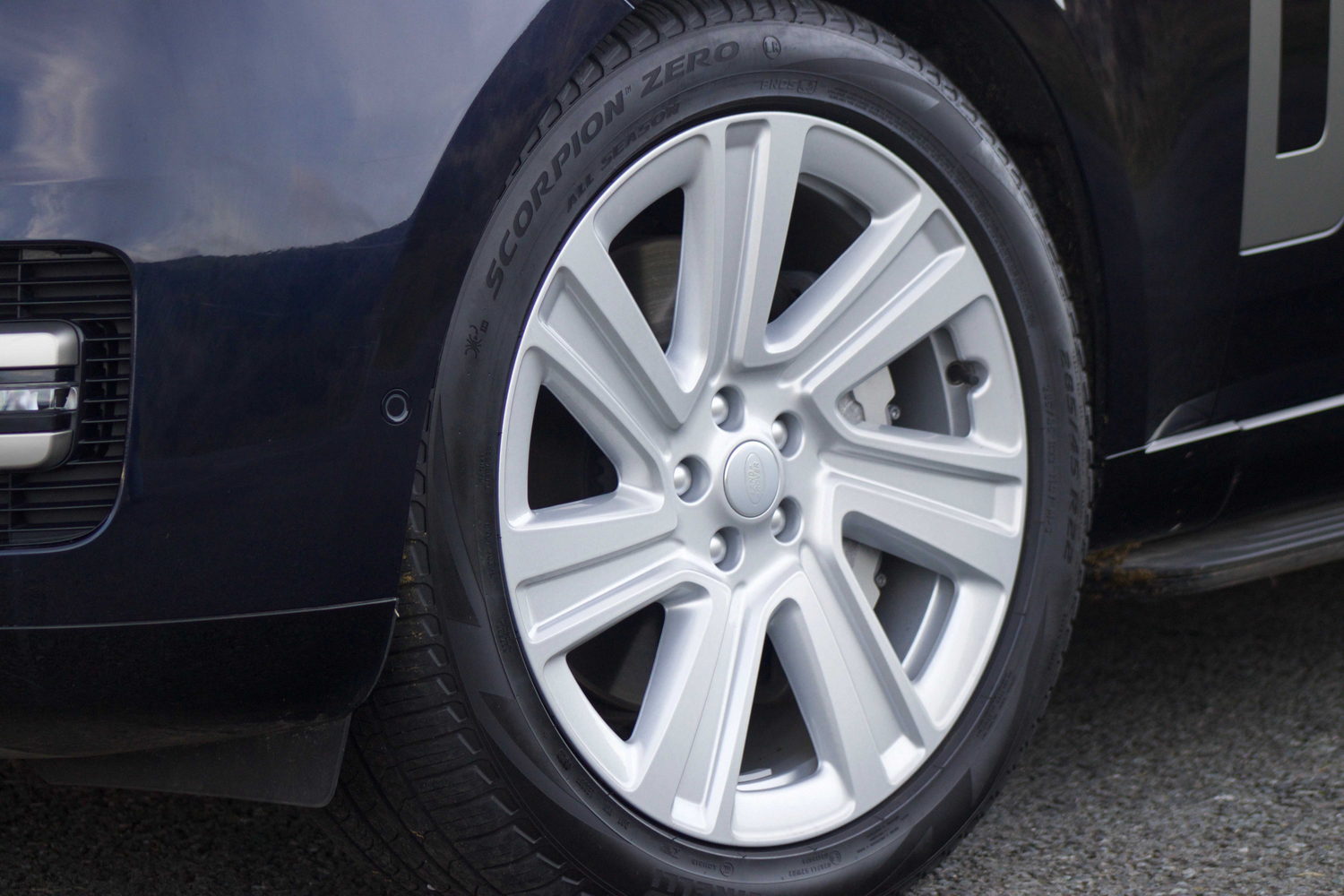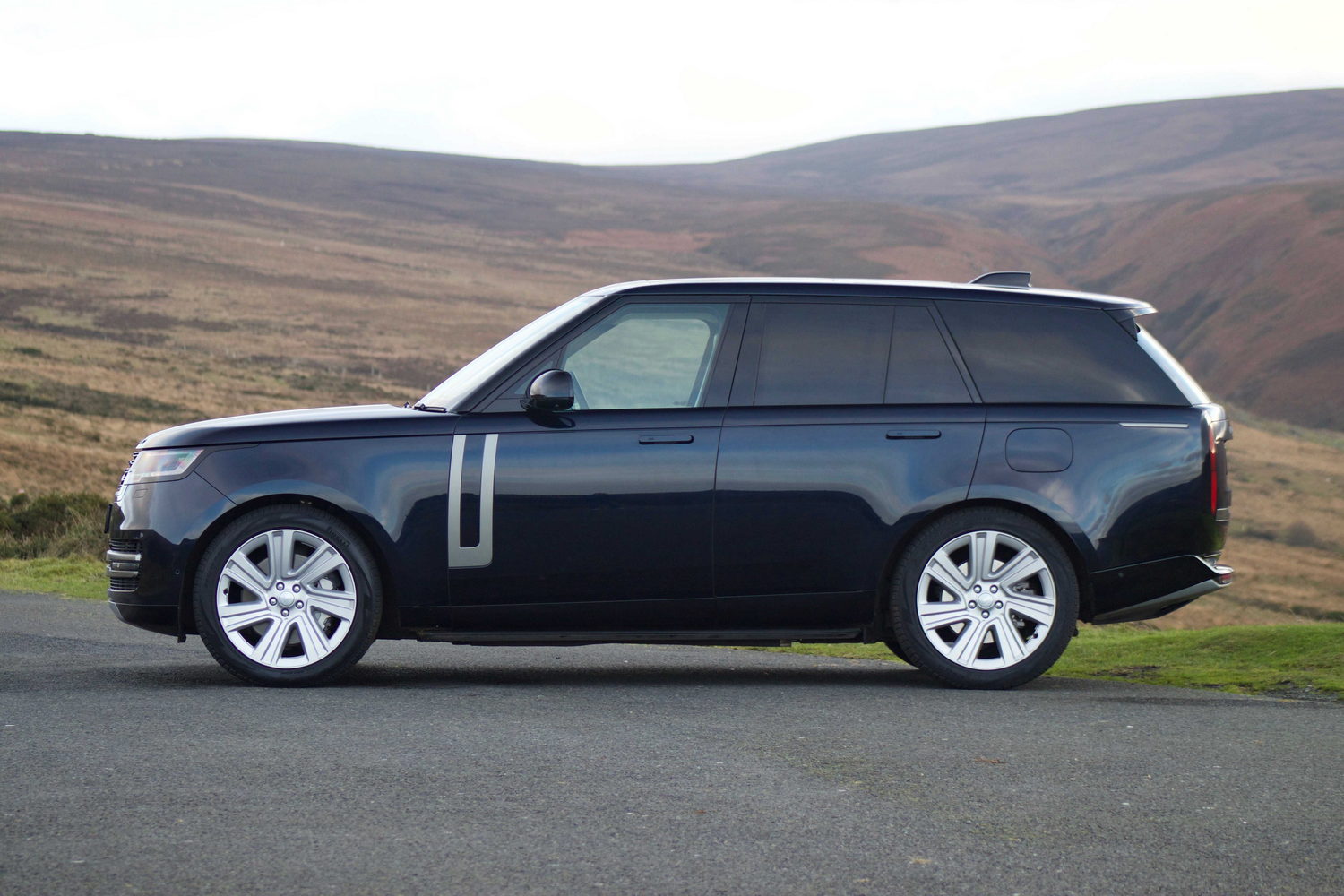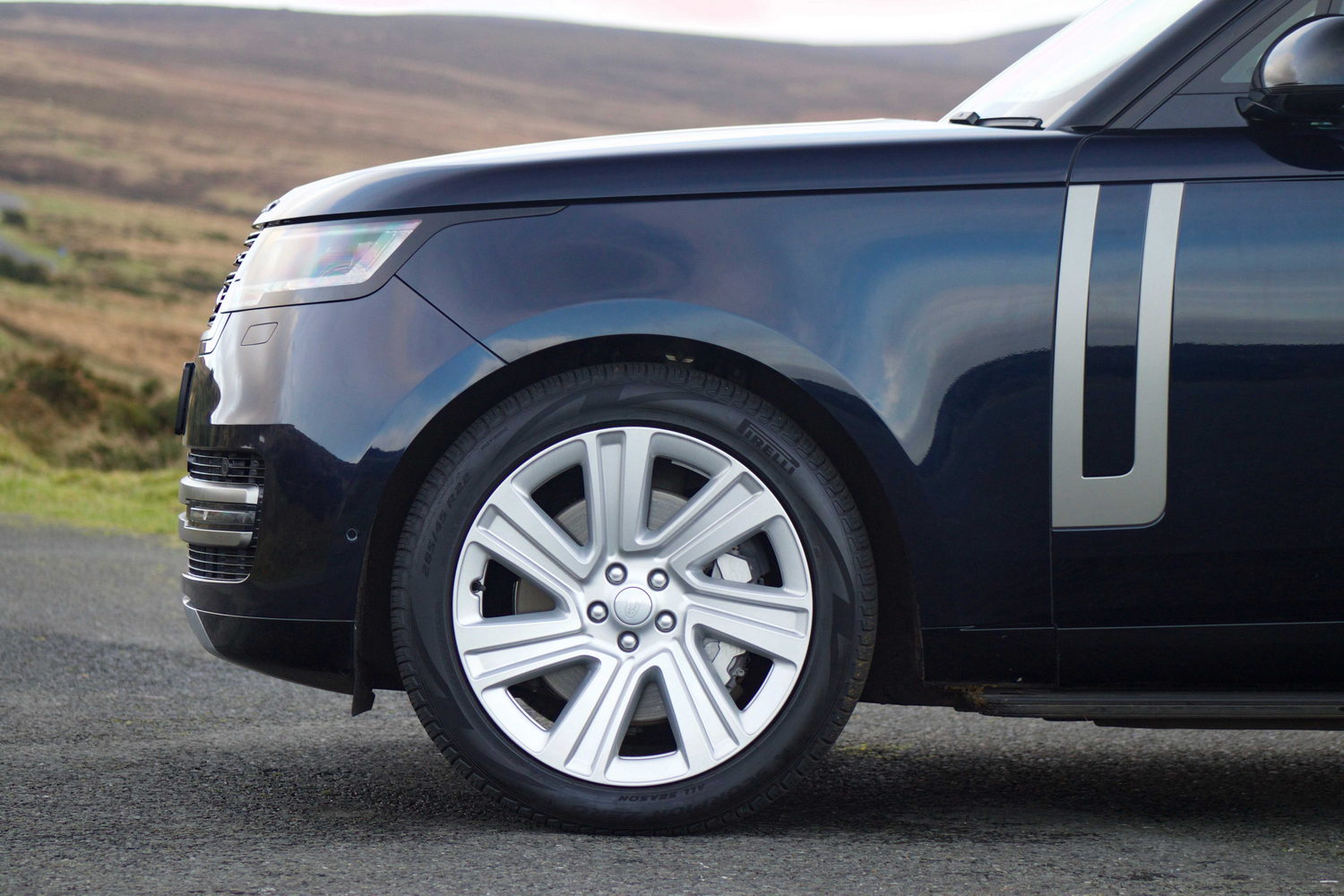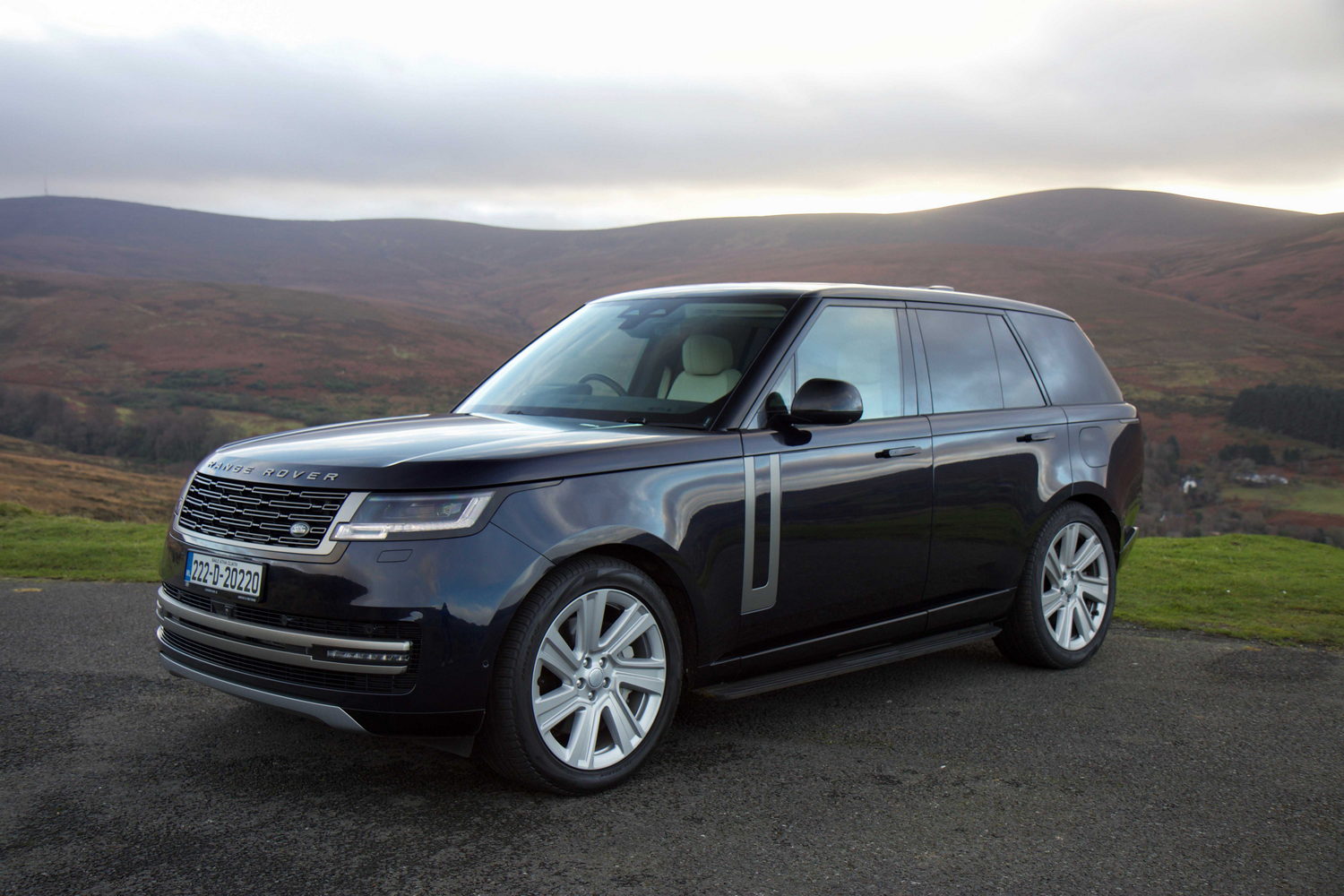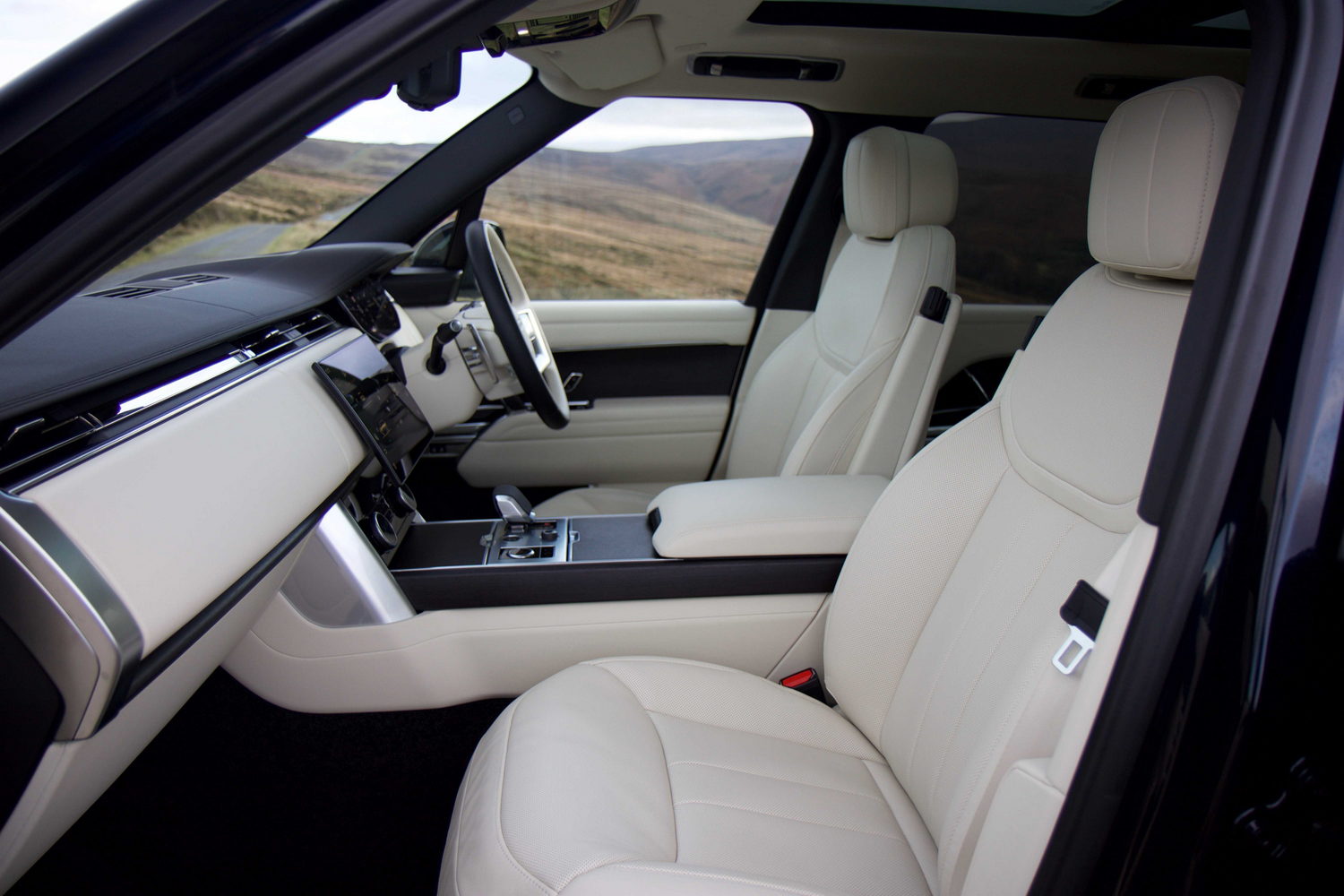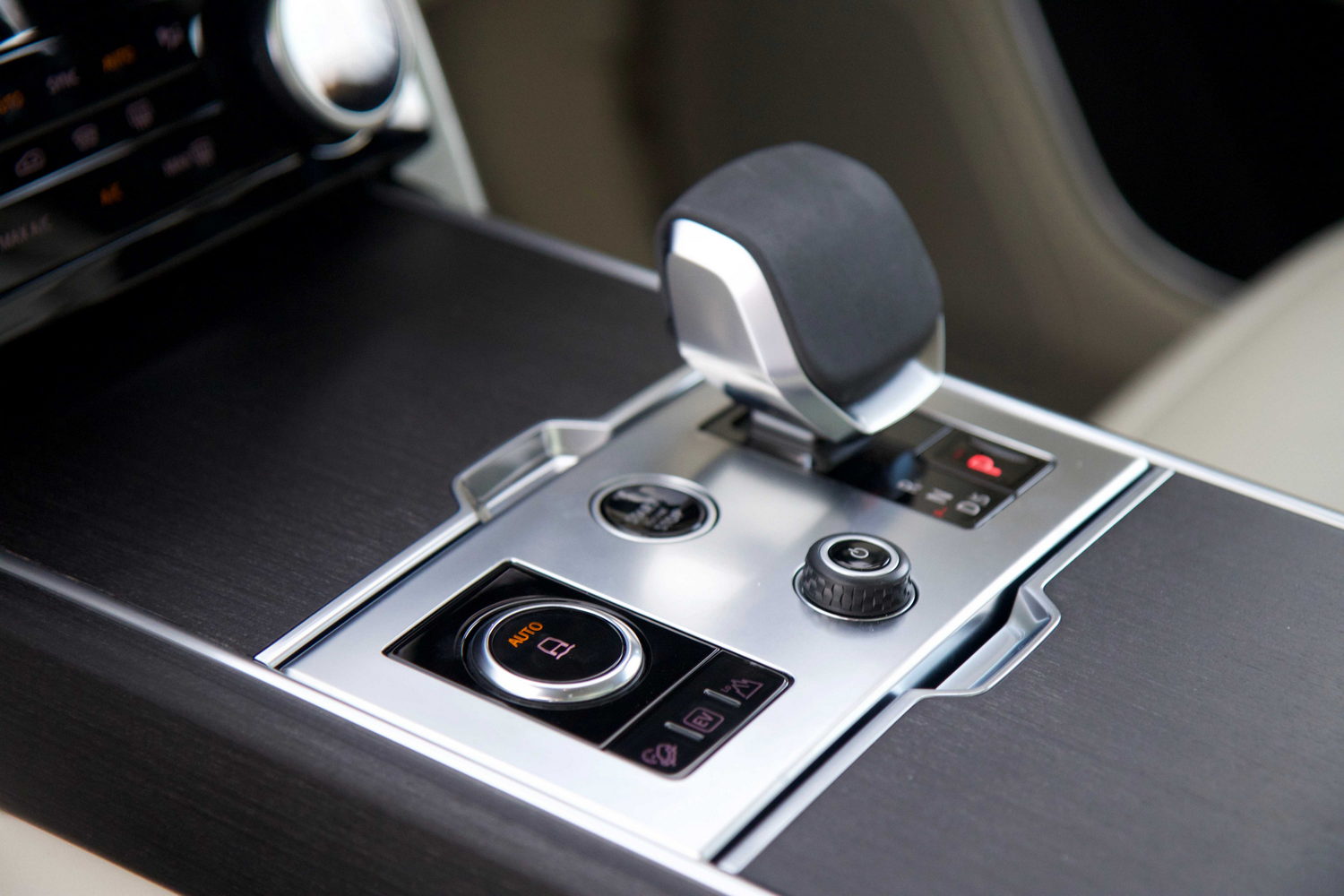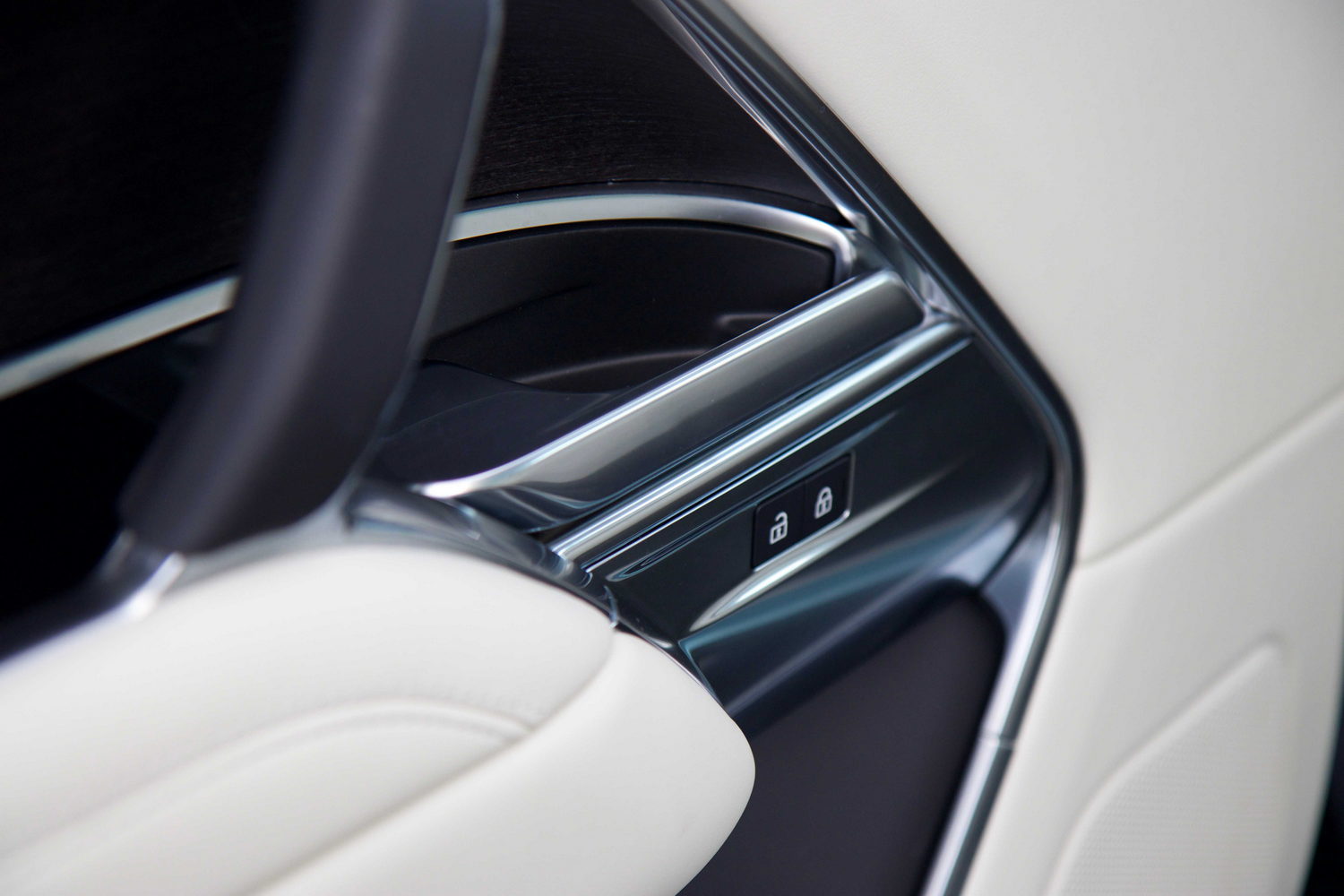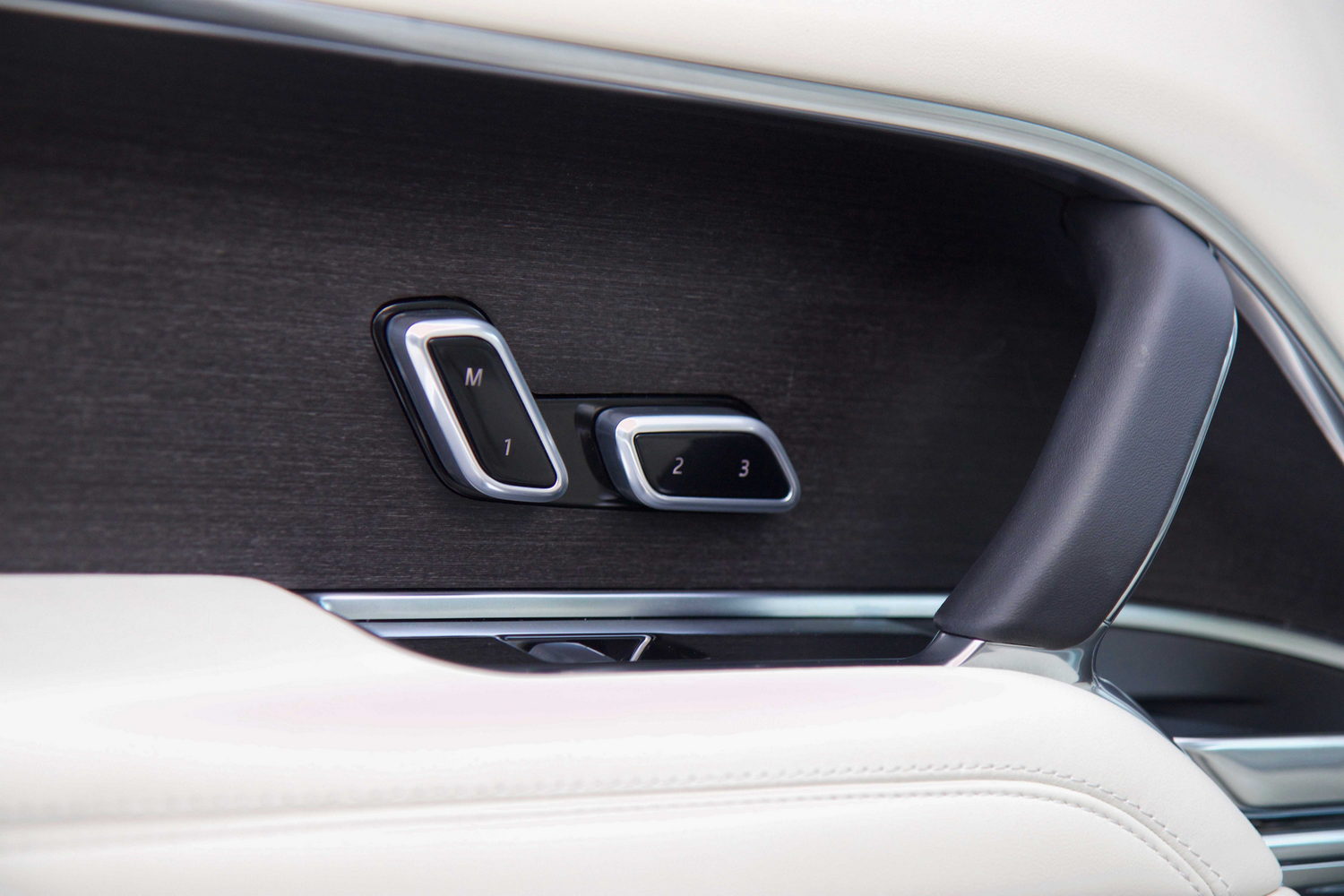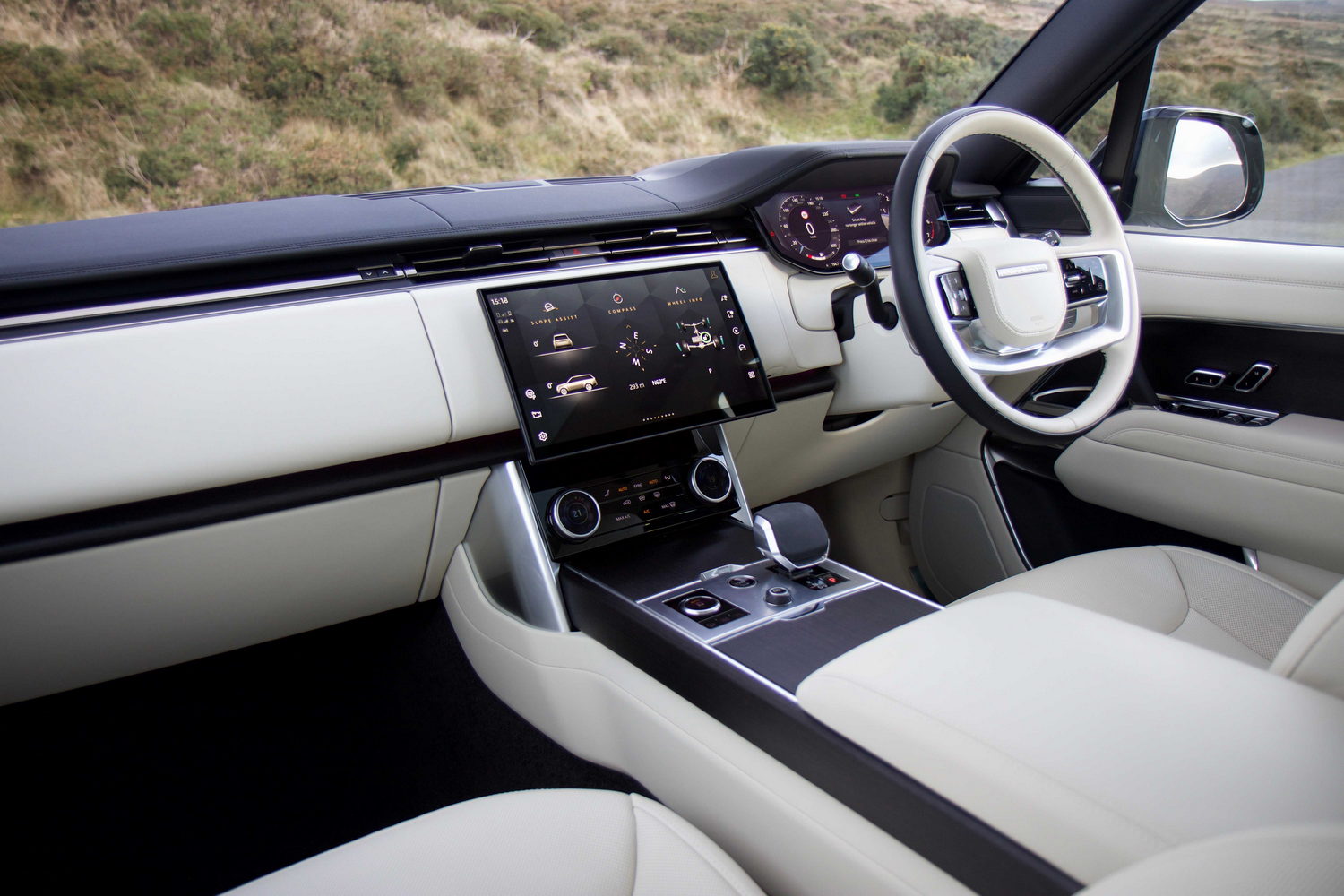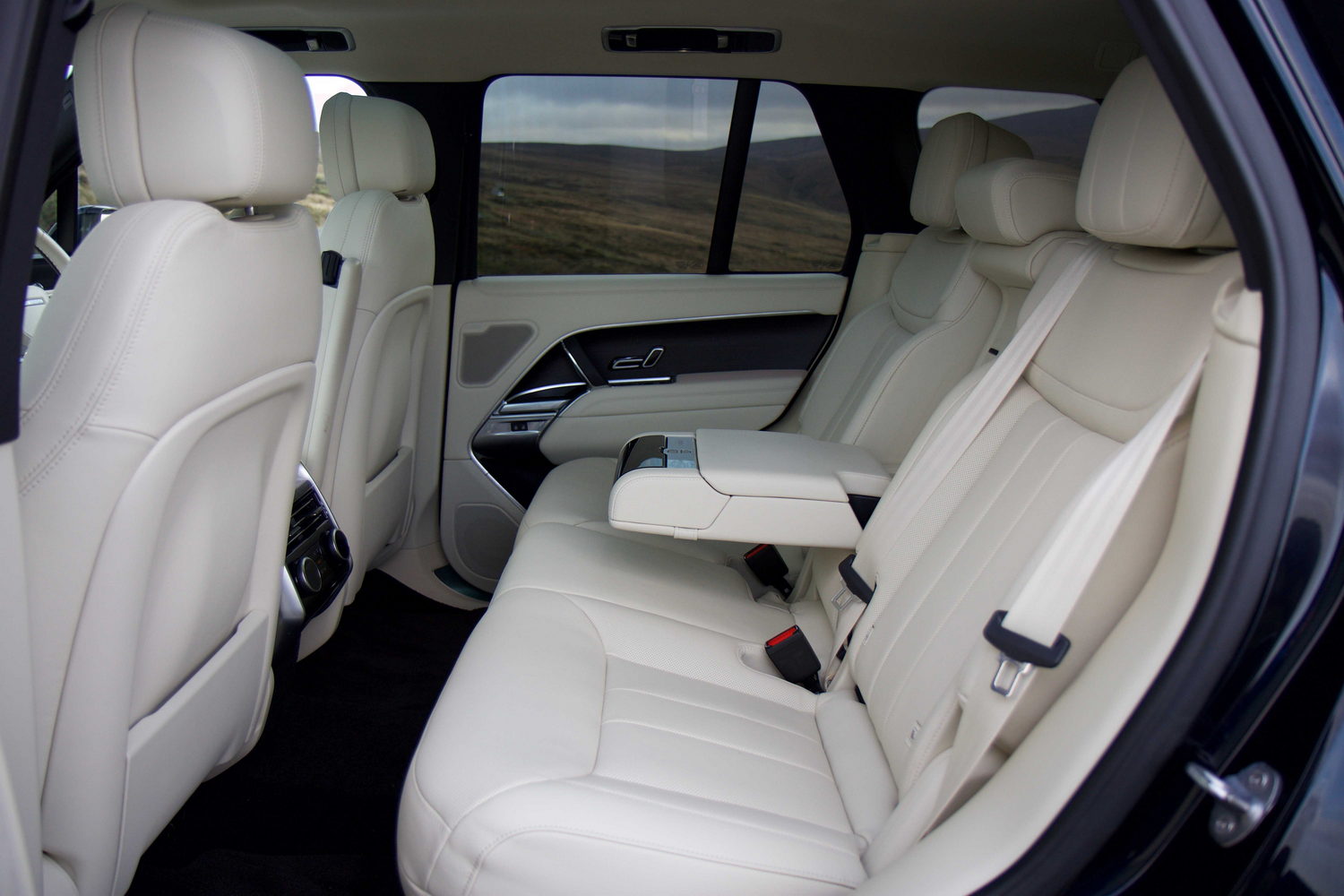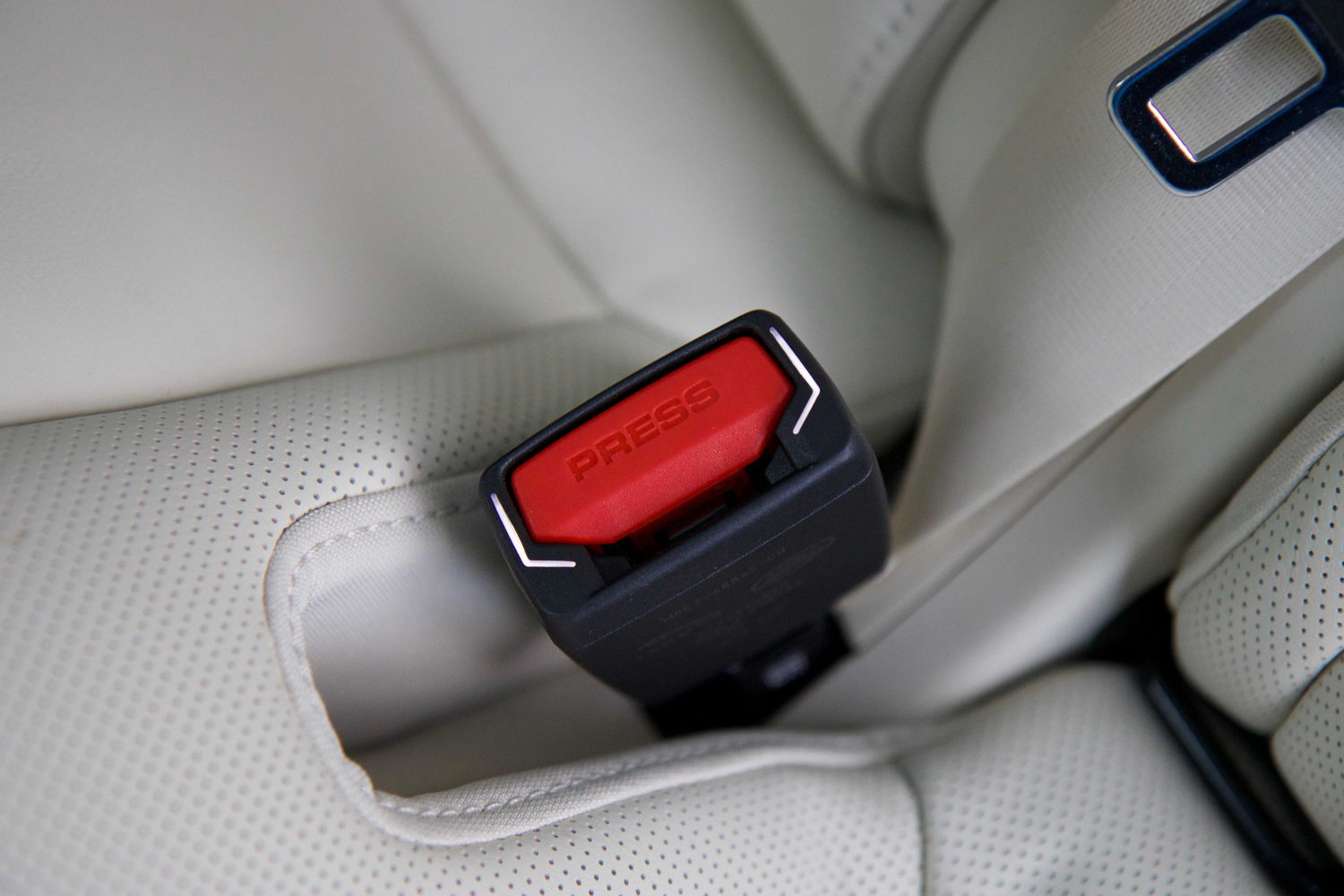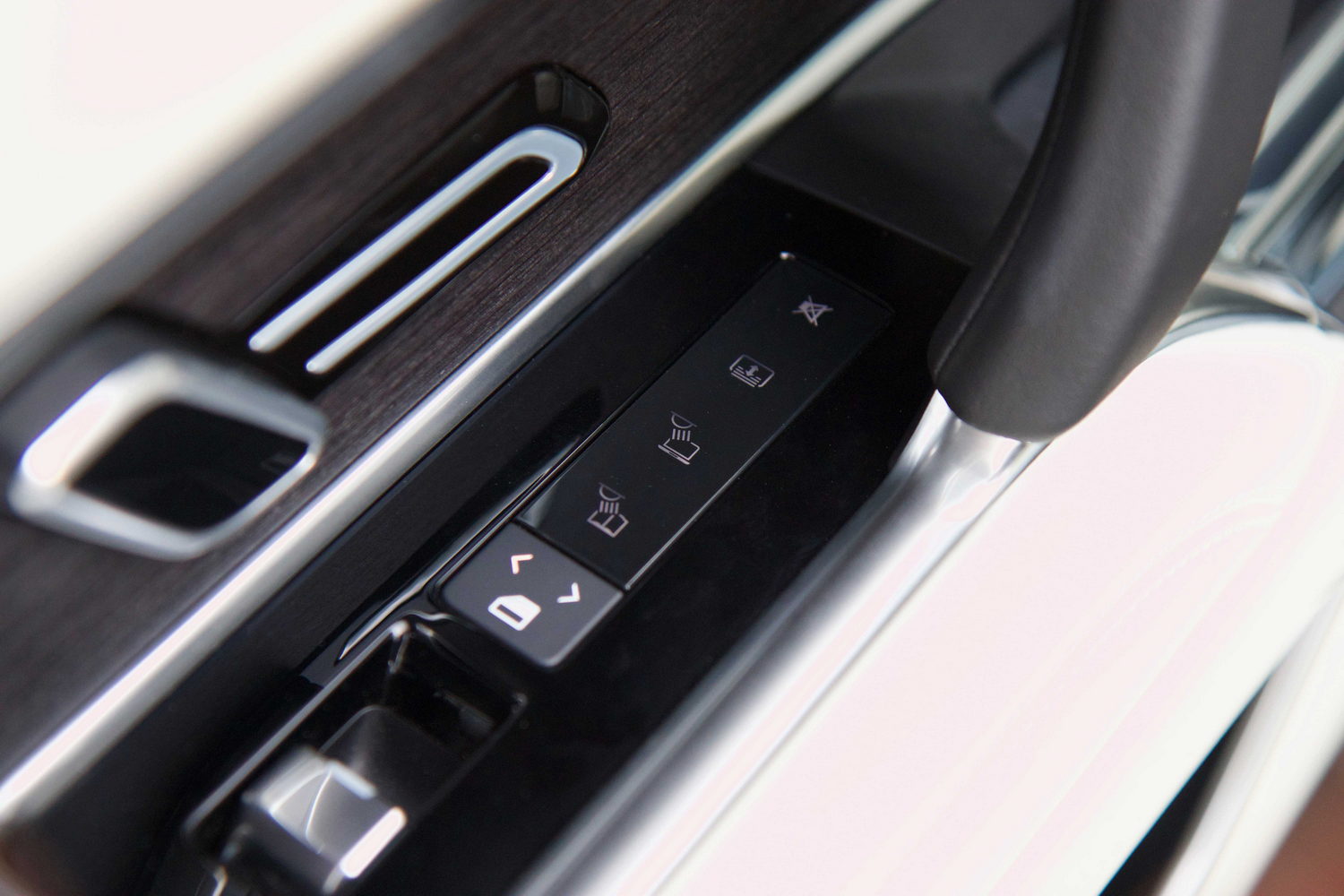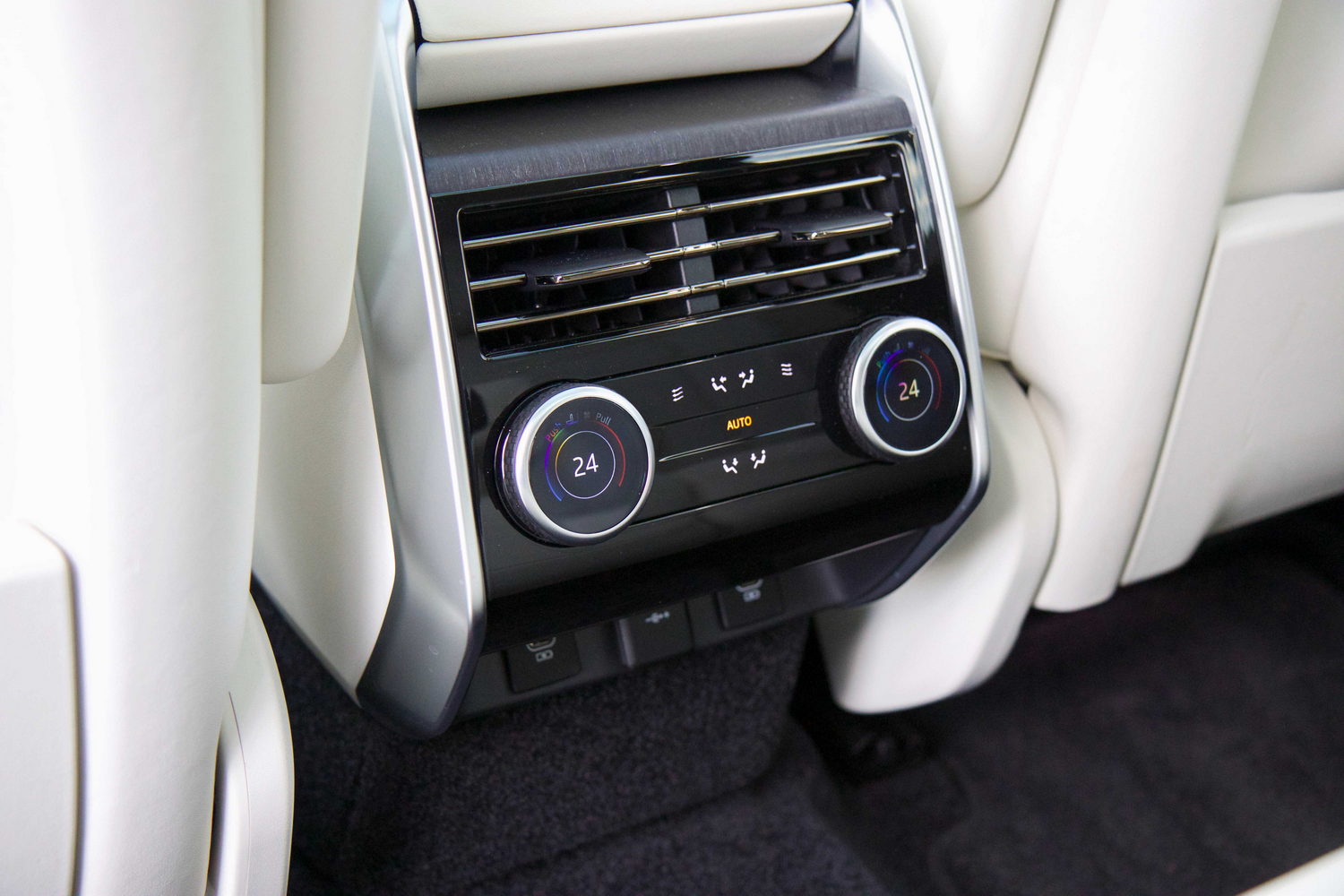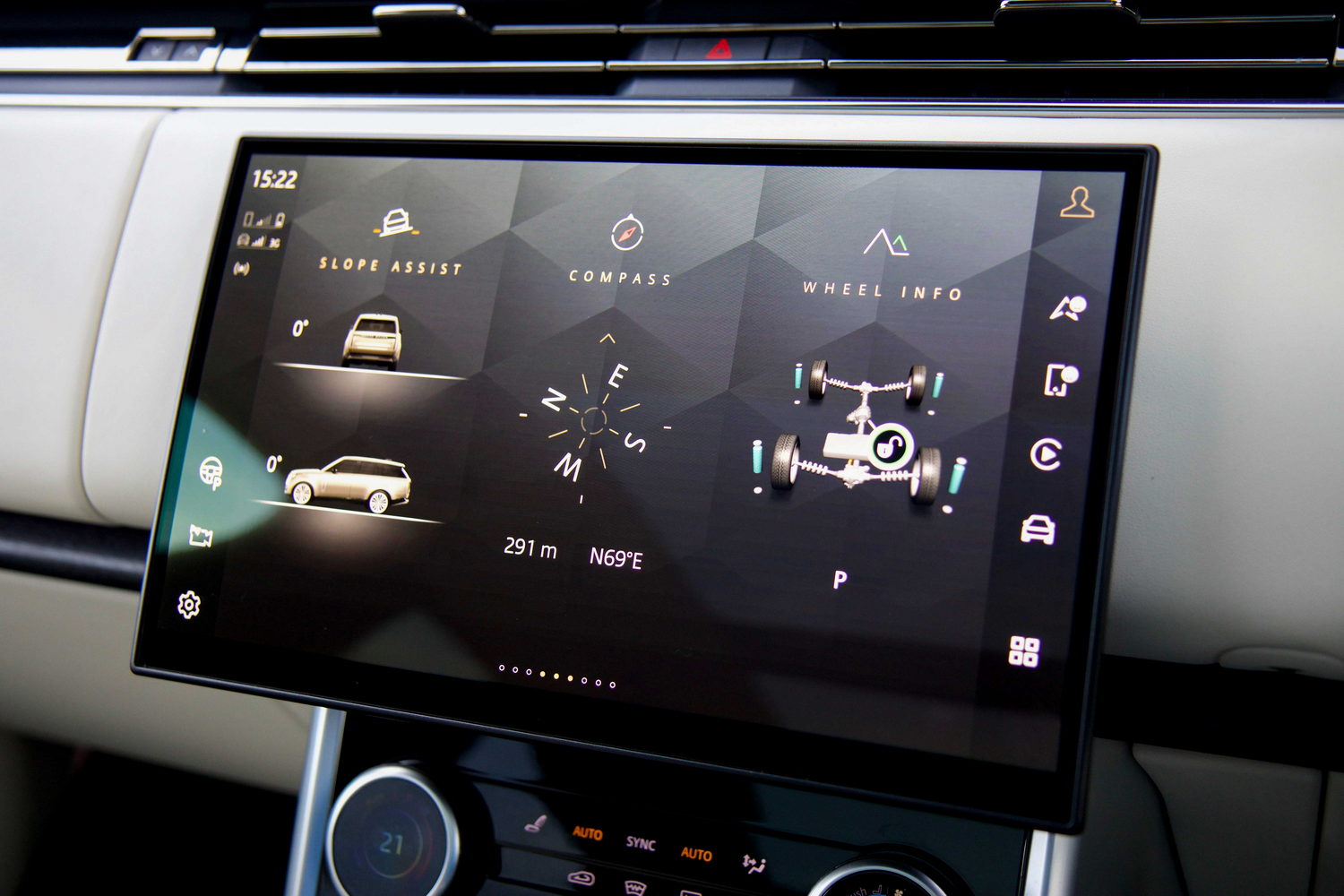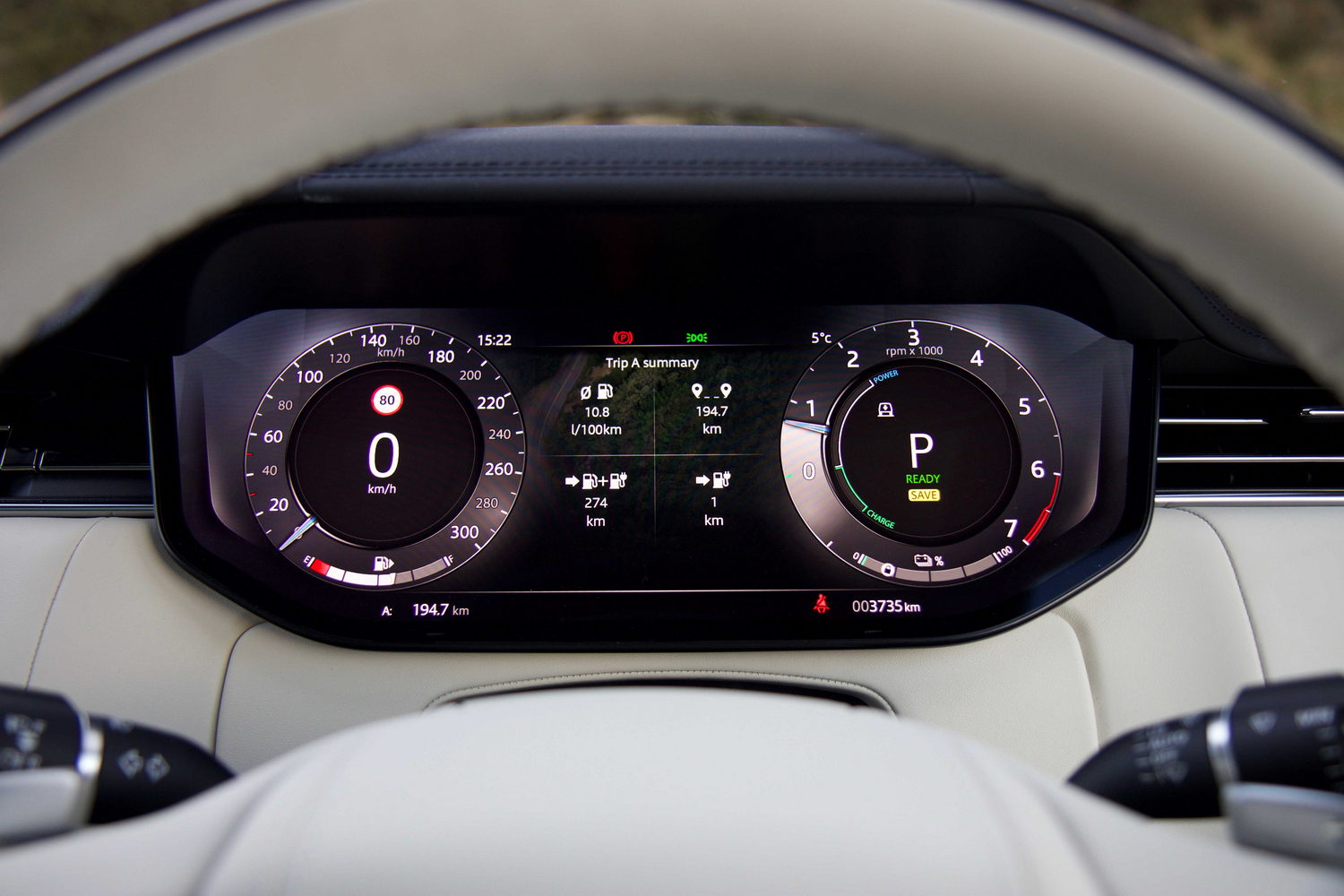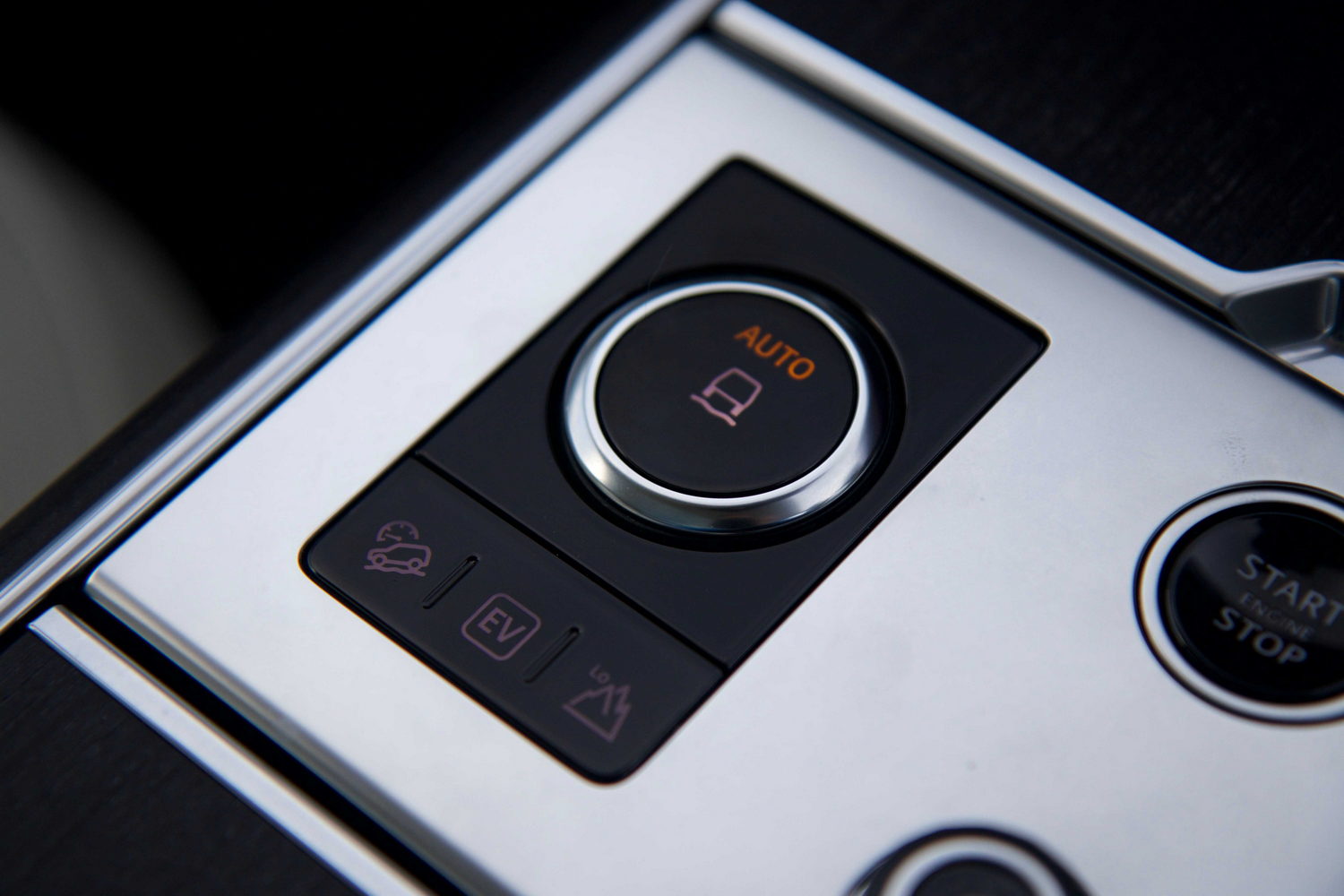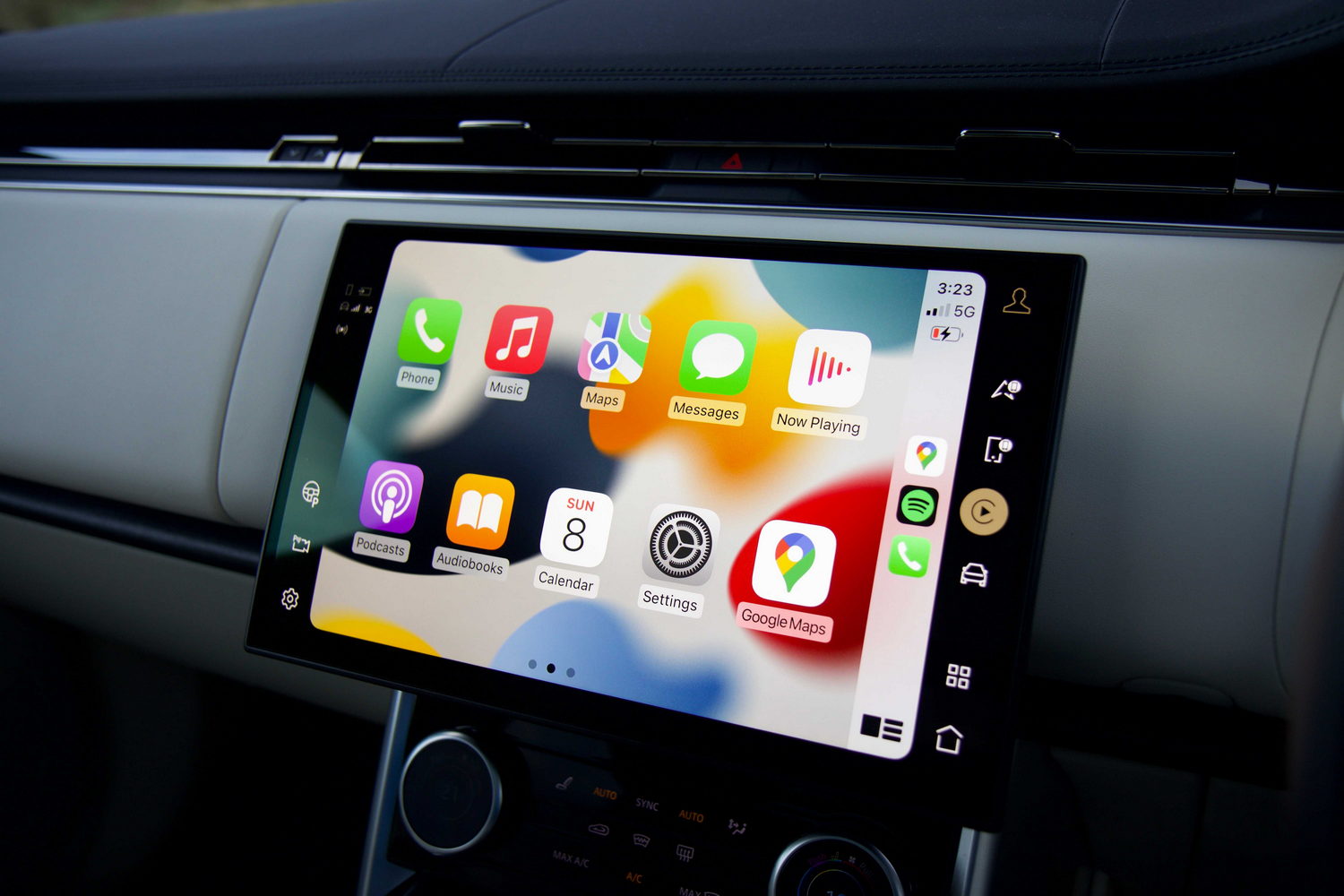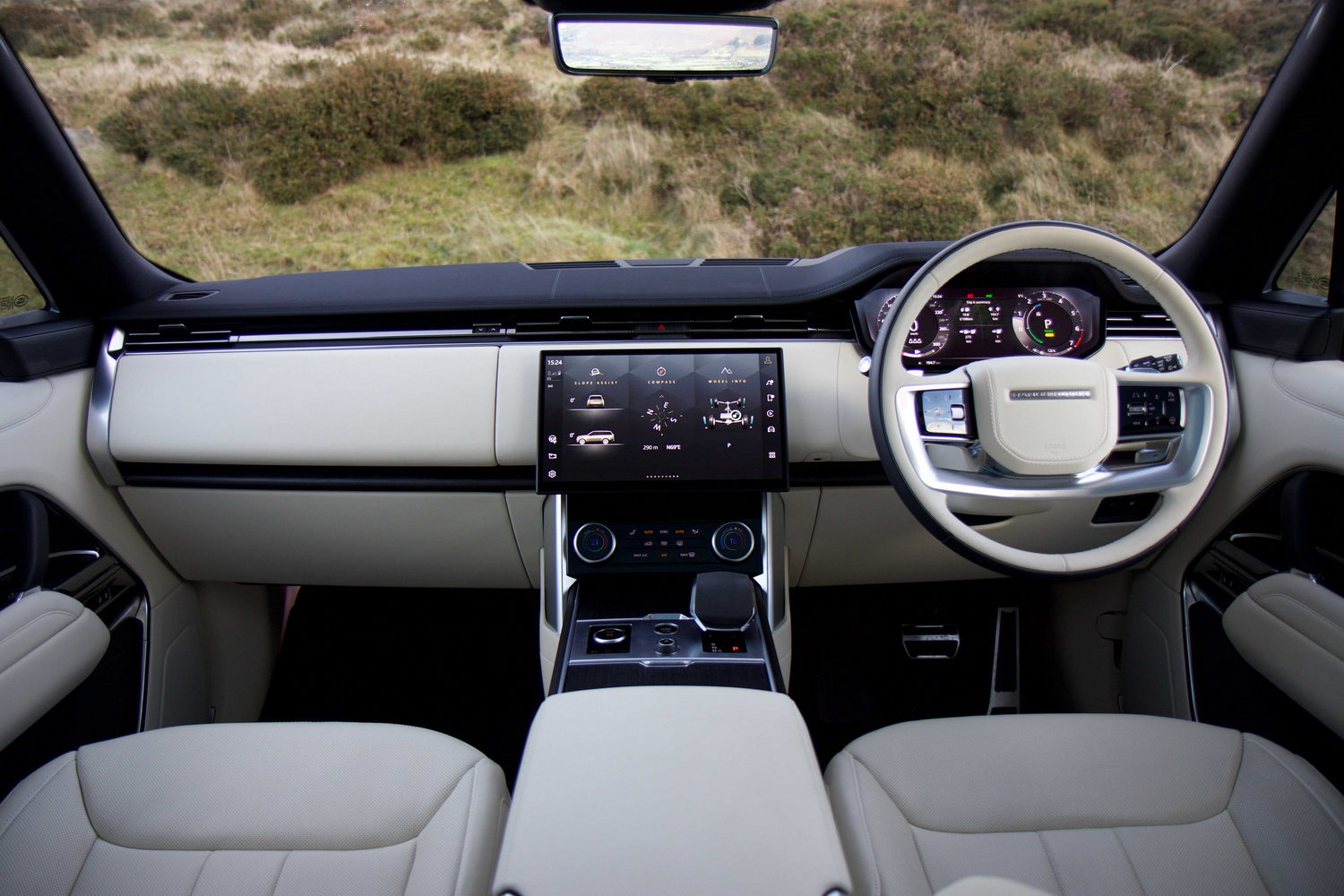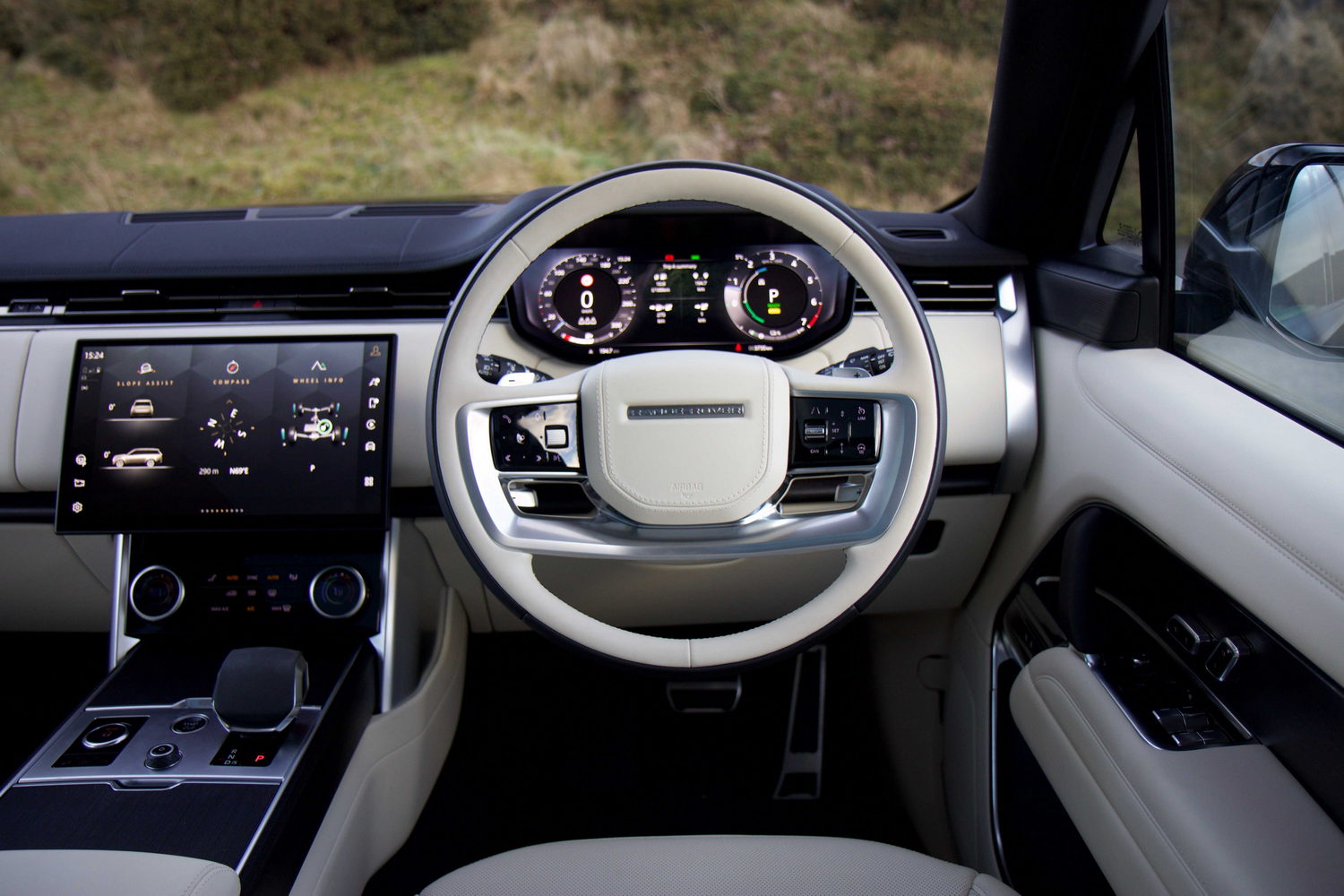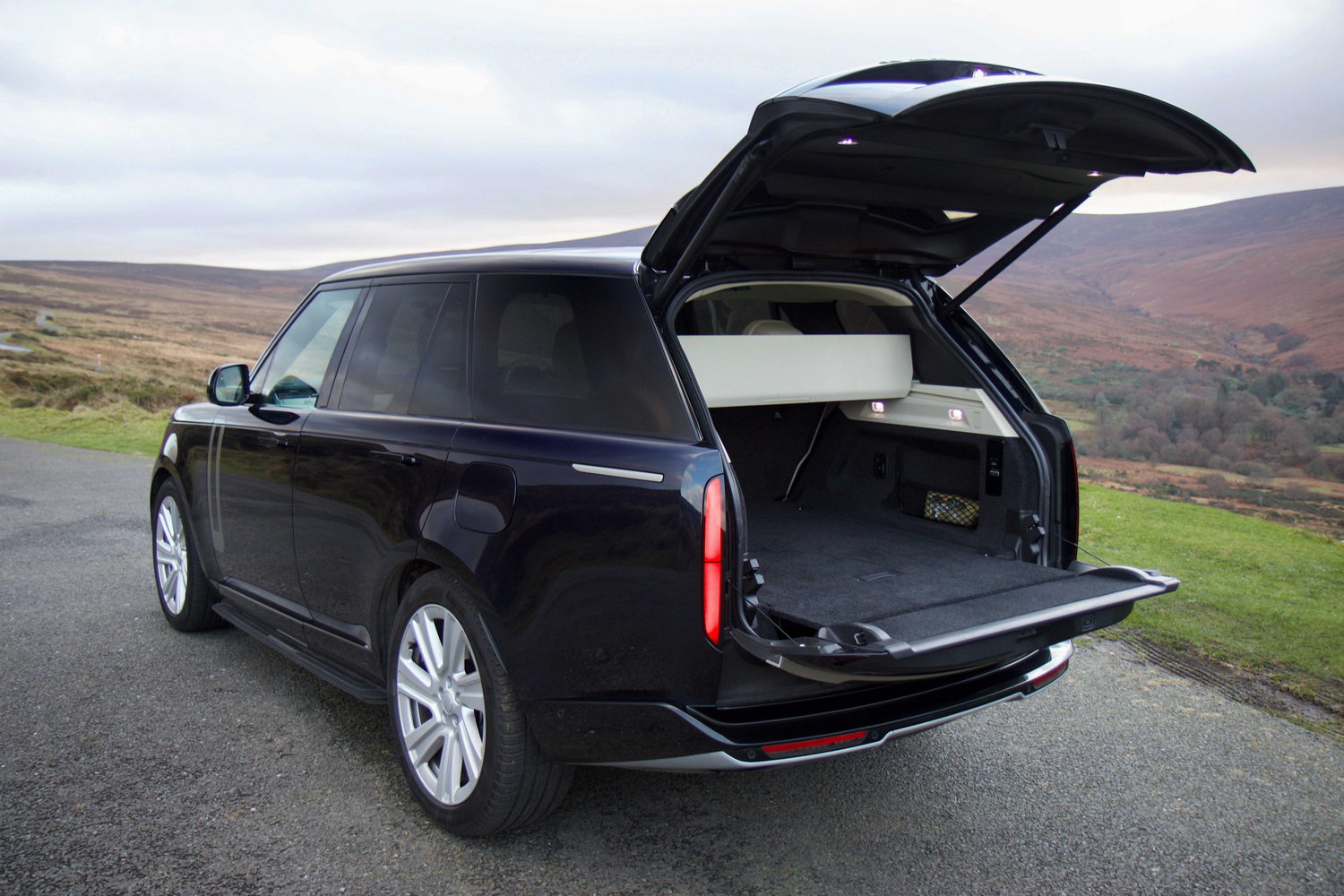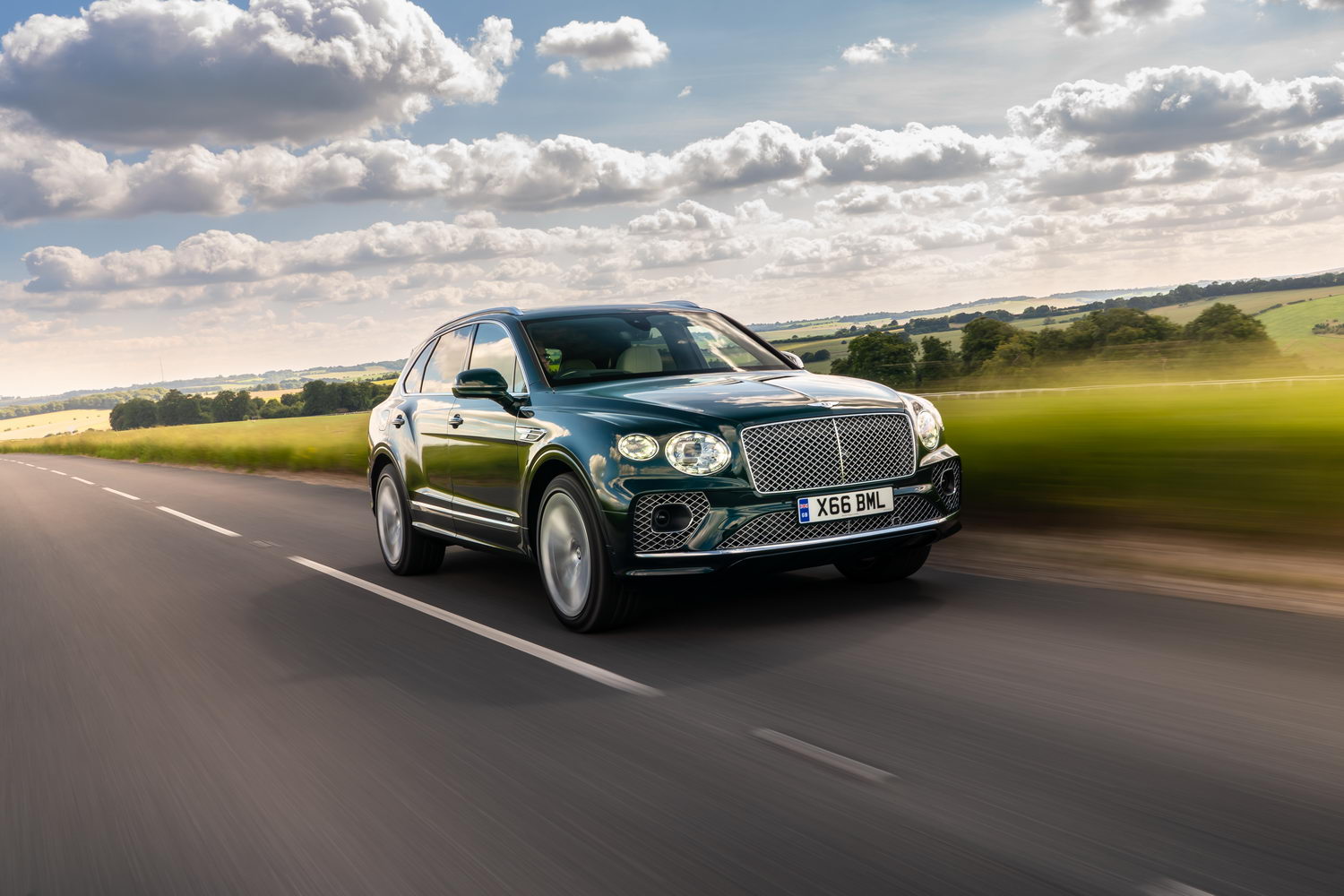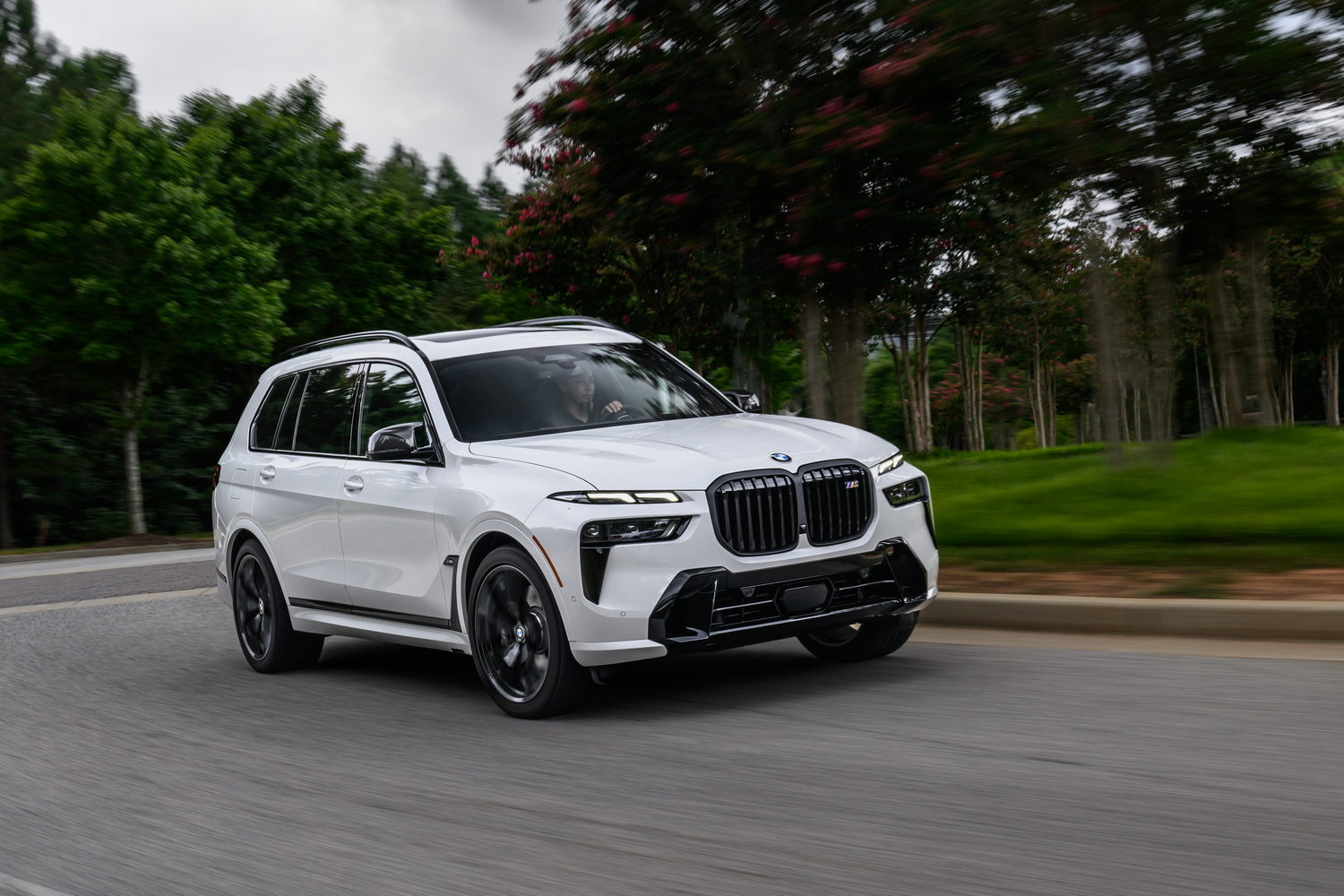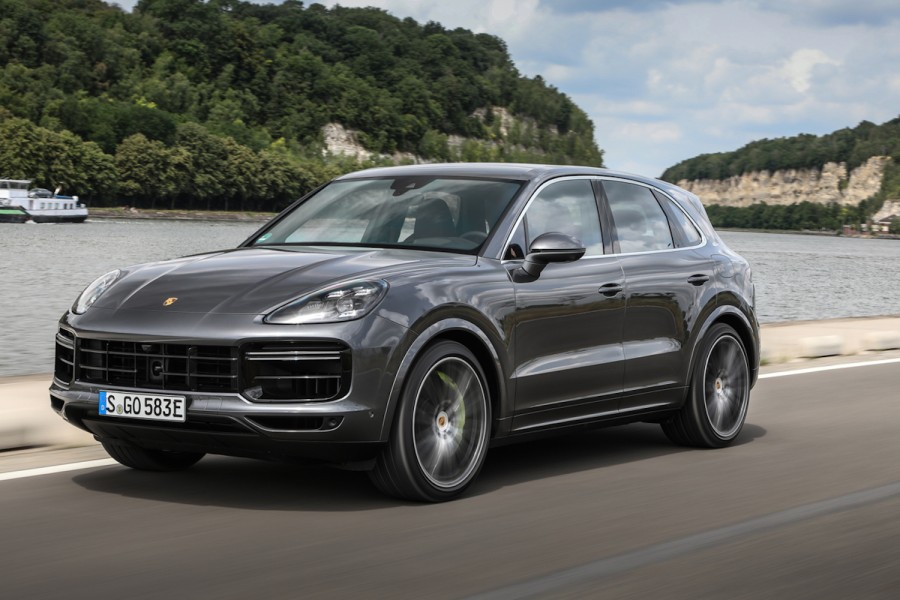Range Rover overview
While the first Range Rover was designed as a larger model to sit alongside the original Land Rover, the car has since gone on to become a byword for luxury. It's not just an upmarket SUV, because it also competes with the best luxury saloons for refined comfort, and the fifth-generation Range Rover launched in 2022 boosts its appeal even further.
The Range Rover has always been a distinctive car, and the latest model is a clear evolution of what's gone before it. In some ways, it takes the shape of the fourth generation and smooths it off, with flush-fitting door handles and lights that are further integrated into the bodywork for a concept car look. At the rear, the lights are hidden in black panels, and when combined with our car's almost-black shade of dark blue, they're virtually invisible when not in use. The Range Rover's trademark 'floating' roof - made possible by the all-black window frames - is present and correct, while the latest version is larger than its predecessor in every dimension.
The growth spurt is to the benefit of cabin space, which is generous throughout, while the cabin's quality and tech has moved upmarket yet again. There are standard and long wheelbases available, and the latter is offered with the option of seven seats in a 2-2-3 layout. However, this configuration is only available with petrol and diesel Range Rovers - the plug-in hybrid version driven here uses the space under the boot floor for its drive battery.
Thanks to its upmarket appeal (and high list prices) the Range Rover competes at the pinnacle of the luxury car sector, not only against SUVs, but also against cars such as the Mercedes S-Class, Bentley Flying Spur, Audi A8 and BMW 7 Series. As for rival 4x4s, the closest competitor is the Mercedes-Maybach version of the GLS, while the Bentley Bentayga is a slightly sportier alternative. In reality, the Range Rover isn't as expensive as the Bentley, so looks like a relative bargain in comparison, and the same could be said of it when compared with the Rolls-Royce Cullinan SUV. Yes, it really does warrant comparison against such lofty machinery.
The Range Rover model range
Irish prices for the Range Rover start from €138,086, and it's the P440e plug-in hybrid tested here that's the entry point of the engine range. This features a 3.0-litre straight-six turbocharged petrol engine that's joined by a 105kW electric motor for a total maximum of 440hp. There's also a 31.8kWh battery, which means that the Range Rover can officially travel up to 113km on battery power alone, further enhancing cabin refinement.
There is a second plug-in model in the form of the P510e. This has the same core powertrain as the P440e but with a maximum power output of 510hp. The all-electric range and CO2 emissions are the same, but the 0-100km/h time reduces from exactly six seconds to 5.5 seconds, while the list price increases by around €18,000.
Choose a diesel, and there are three options available, all based on Land Rover's 3.0-litre straight-six 'Ingenium' engine They're badged D250, D300 and D350, and have corresponding power figures, while the main differences between them are faster acceleration times and higher emissions as you move up the range. All versions feature mild-hybrid technology in a bid to reduce the latter.
The six-cylinder turbocharged petrol P400 model also features mild-hybrid tech, while a 0-100km/h time of 5.8 seconds is quoted. However, that's not the fastest petrol Range Rover, because there's also a P530 model offered. This features a BMW-sourced 4.4-litre twin-turbocharged V8, which gives the Range Rover a 0-100km/h time of 4.6 seconds - impressive for a large luxury SUV weighing in at 2.5 tonnes.
All powertrains feature an eight-speed automatic gearbox and permanent four-wheel drive with Land Rover's latest Terrain Response system, which automatically sets the car's differentials and air suspension according to the surface type that you have selected. All-wheel steering is also fitted as standard, which helps this five-metre long SUV have a turning circle of just 11.4 metres, which is better than some compact 4x4s can manage.
With prices starting in the six-figure range, you'd expect plenty of equipment as standard, and you'd be right. There are SE, HSE, Autobiography and SV trims, and the kit list is extensive even for the SE version. There are 21-inch alloy wheels, although options ranging from 20-22 inches are also available, while body colours include the usual subtle silvers, dark greens and blues, while vivid orange and bright blue hues are also on offer.
Exterior tech includes auto-activating pixel LED headlights with washers, a panoramic glass roof, heated door mirrors and screen wash jets, auto wipers, a powered tailgate and keyless entry with a lower access height for the air suspension and soft-close doors. Inside, there are wood veneers, leather trimmed, 20-way adjustable heated front seats, heated outer rear seats, three-zone climate control, a 13.1-inch Pivi Pro infotainment touchscreen with Meridian sound system and wireless Apple CarPlay and Android Auto, wireless smartphone charging and a number of USB and 12-volt sockets.
HSE models add an €8,000 premium and include 22-inch wheels, digital LED headlights, a rear-view mirror that uses a rear-facing camera to cast images to the mirror, upgraded leather and electric reclining rear seats, a Meridian 3D surround sound system, head-up display and park assist with remote parking.
The Autobiography is another €1,800 over HSE trim and includes laminated glass for extra sound insulation, an opening panoramic roof, 24-way heated and cooled massage front seats and 'Executive Class' rear seats, upgraded leather and wood trim inside, four-zone climate control with air purification, an auto-folding load cover in the boot, electric sunblinds for the rear doors and illuminated seatbelt buckles.
The pinnacle of the Range Rover line-up is the SV, which starts from just under €210,000. This ramps up the spec with SV-exclusive exterior trim, diamond-cut 22-inch alloys, ash veneers, a 'hot stone' massage function for the front seats, even plusher rear seats, a Signature Meridian sound system and a white ceramic finish for the drive controls. In addition, a Dynamic driving mode is added to the Terrain Response system, plus there's an electronic active differential with torque vectoring to enhance the car's handling.
SE and HSE trims are available with all engine options, but the D250 isn't offered in Autobiography trim. At the top of the range, the SV only comes in P510e and D350 guises. Long-wheelbase models carry a premium of around €30,000 over the standard model, while seven seats can be added to selected diesel and petrol models for around €5,000.
On the subject of safety, the Range Rover achieved the full five stars in the Euro NCAP ratings, with 84 per cent for adult occupant protection, 87 per cent for child occupant protection and 82 per cent for 'Safety Assist' thanks to its large suite of driver assistance systems. It managed 72 per cent for protection of vulnerable road users, which is a little better than the Range Rover Sport managed, despite its high front end. That score was in part due to its ability to automatically avoid collisions with pedestrians and cyclists in "most test scenarios".
The Range Rover interior
With the air suspension at its access height, the Range Rover is no harder to climb into than a conventional SUV. But once on board, it's clear that the Range Rover is something special. There's acres of space inside for all occupants, and cabin storage is excellent. The dashboard is vast, but the digital displays mean it looks hi-tech.
The driver's instruments are clear to read and are operated by the Range Rover's large, chunky multifunction steering wheel, while the sheer size of the 13-inch Pivi Pro infotainment system means it's very easy to use. The quality of the leather trim and metal switchgear is satisfying, too. There are separate climate controls on a panel below the main screen, so you don't have to fumble through menus to change everything, while the rotary dials adjust either the temperature or seat heating easily.
We've already mentioned the amount of space on offer, but it's the small touches that really help the Range Rover feel special. Electric adjustment for the seats (including the rears) means it's easy for anybody to find a comfortable seating position. The middle rear seat folds electrically to create a large armrest that features built-in storage, cup holders (that also open electrically) and a touchscreen for controlling the climate and media systems.
Cabin storage includes two gloveboxes, deep door bins and a large central armrest cubby up front that can be upgraded with a fridge. Ahead of this is yet more storage, including a drawer for a phone. Further back, the rear seats fold electrically to create a vast, flat cargo area. There's no under-floor storage or room for a third row of seats courtesy of the hybrid battery under the floor, but there is still space for a spare wheel.
The Range Rover driving experience
No matter what your drive entails, there's a sense of occasion whenever you head off in a Range Rover. The tall driving position provides a clear view of your surroundings and almost puts you at the same eye level as trucks, so you get a different perspective to most other drivers.
What's more, the Range Rover is very hushed. We've already sung the praises of the similarly powered Range Rover Sport, but the full-fat Range Rover takes things to another level. There's no wind noise to speak of, and there's barely a hint of tyre noise, too. In addition, the PHEV powertrain contributes to the sense of serenity courtesy of its hushed engine and the fact it favours electric drive, especially at lower speeds.
As the Range Rover is so quiet, its performance can catch you by surprise. A 0-100km/h time of six seconds is quite impressive (it's only two tenths of a second slower than the Range Rover Sport's), and the way the powertrain uses its mix of petrol and electric power sources means the car feels quite responsive, especially when you consider how much weight it has to haul around.
One highlight is the Range Rover's all-wheel steering. This boosts manoeuvrability, especially at lower speeds, although that big steering wheel means it still feels like you need to make a lot of effort to get it from lock to lock. While the four-wheel steering system is designed to boost agility, the Range Rover's upmarket character means it's not really a car that urges you to push it any harder than you need to.
Of course, one area where you can push it hard is off road. We had limited time to test the Range Rover on rougher surfaces, and we're certain that the conditions that we put it barely grazed the surface of its ability. We found it to be absolutely effortless, though, with the variable ride height lifting the car clear of most obstacles, an automatically locking centre differential and quick hill descent control activation. Land Rover's front camera that allows you to 'see' through the car's bonnet is a useful feature, too, allowing you to spot objects that are immediately ahead of you. The ride is quite stiff if you're travelling over rough ground at speed with the car at the full height of its suspension, but no other 4x4 offers the Range Rover's surreal combination of plush luxury and off-road ability in one package.
As already mentioned, the P440e hybrid drive system suits the Range Rover's refined character well, and silent running can be achieved off-road as well as on it. We saw a range of 100km from the fully charged battery, while the electronics do a good job of managing energy between the battery and engine, so you'll likely cover the distance that the range readout estimates. We'd recommend charging the battery as often as possible to maximise your electric range, but a return of 6.9 litres/100km is pretty good for such a large and heavy luxury SUV. If you do charge the battery, it'll take seven hours from a 7kW wallbox, while 50kW DC fast charging is available, so a public charge point can top the battery up from 0-80 per cent in around an hour.
Our verdict on the Range Rover
If you're familiar with the upmarket luxury that the Range Rover is famous for, then the latest model won't disappoint. The plush materials and high-quality switchgear mean it's a great place to spend time, and the quiet refinement that the car offers is excellent. Add in touchscreen tech that's easy to use and logical in its operation, and the Range Rover hits new heights in the luxury car class - as you'd hope given its pricing.
What do the rest of the team think?
It's clear that Land Rover is trying to position the Range Rover as an even more luxurious model than its predecessor, but I think it has fallen short of doing so. The exterior styling makes it seem too much like a mere facelift of the previous generation rather than a whole new model. It does drive with a high degree of refinement, as it should, and it's positive to see how differently it behaves from the Range Rover Sport. Inside, the look and feel are better than before, but Land Rover's reputation for questionable reliability has continued into this model. My test car suffered from numerous faults, including malfunctioning indicators and a driver's door that creaked like an old barn door, neither of which is acceptable on a car costing this much money.
Dave Humphreys - Road Test Editor

